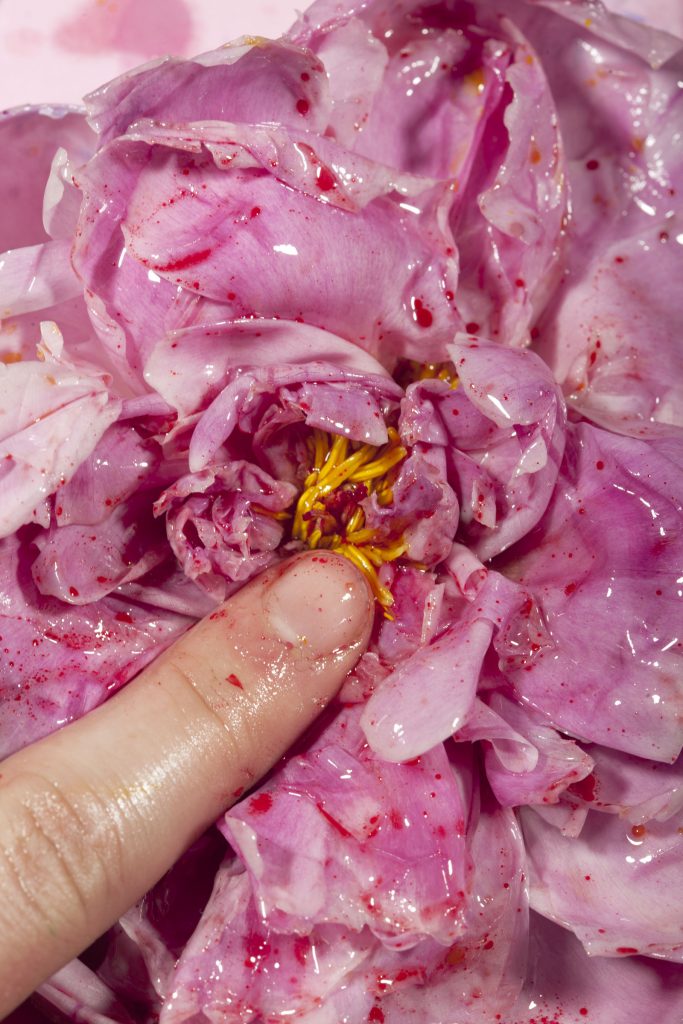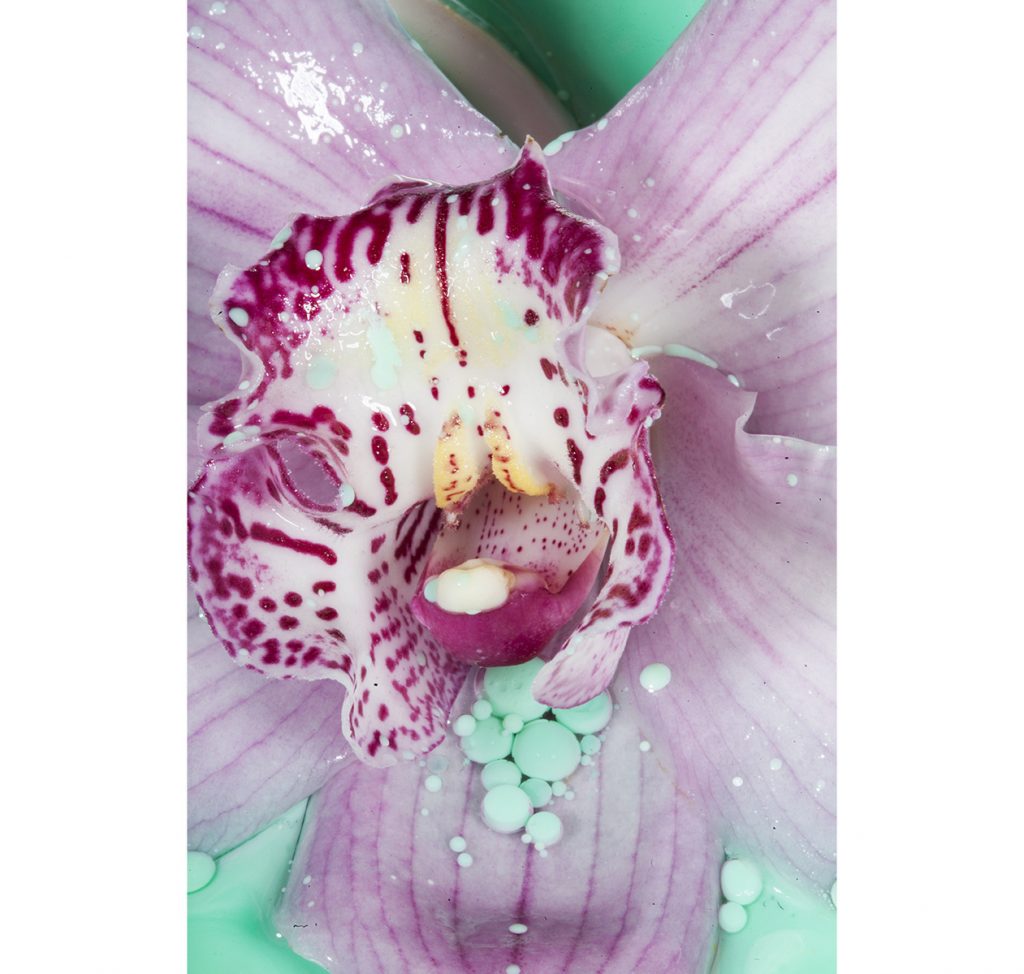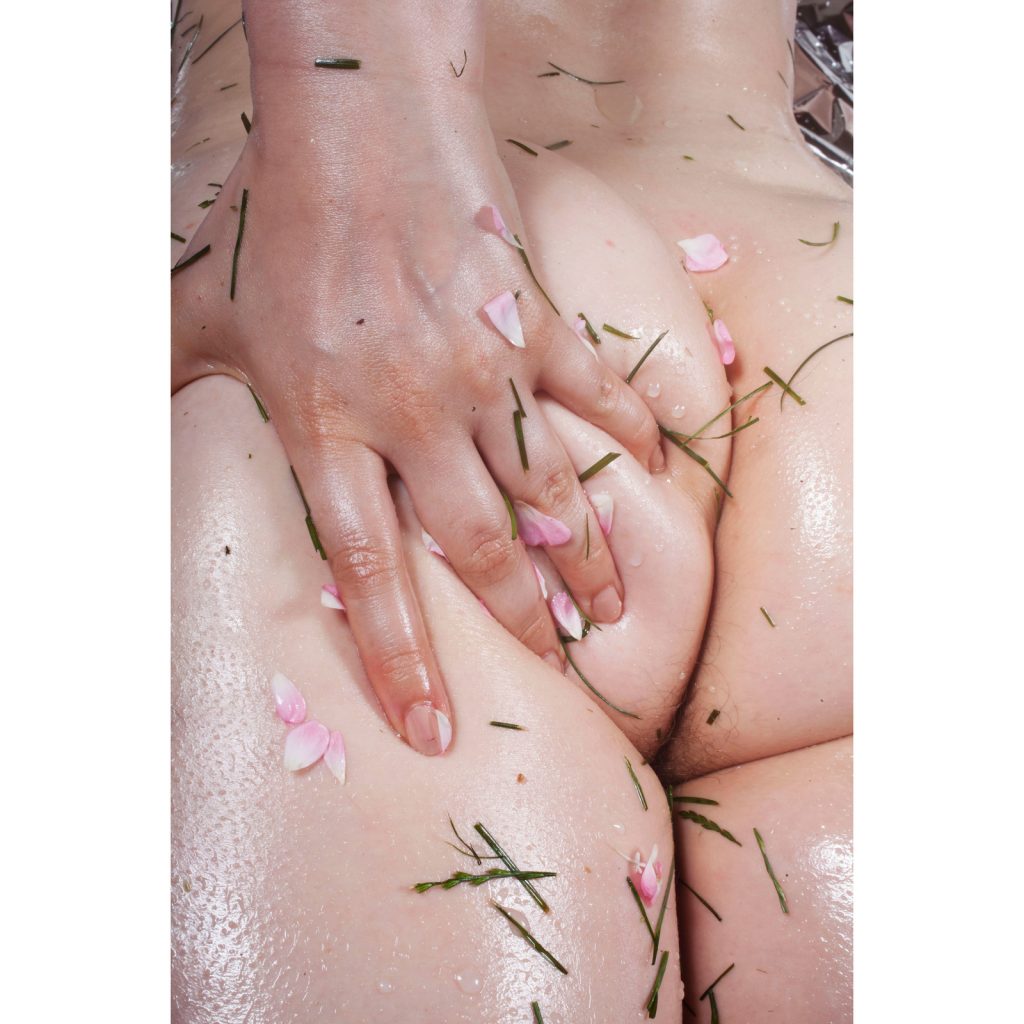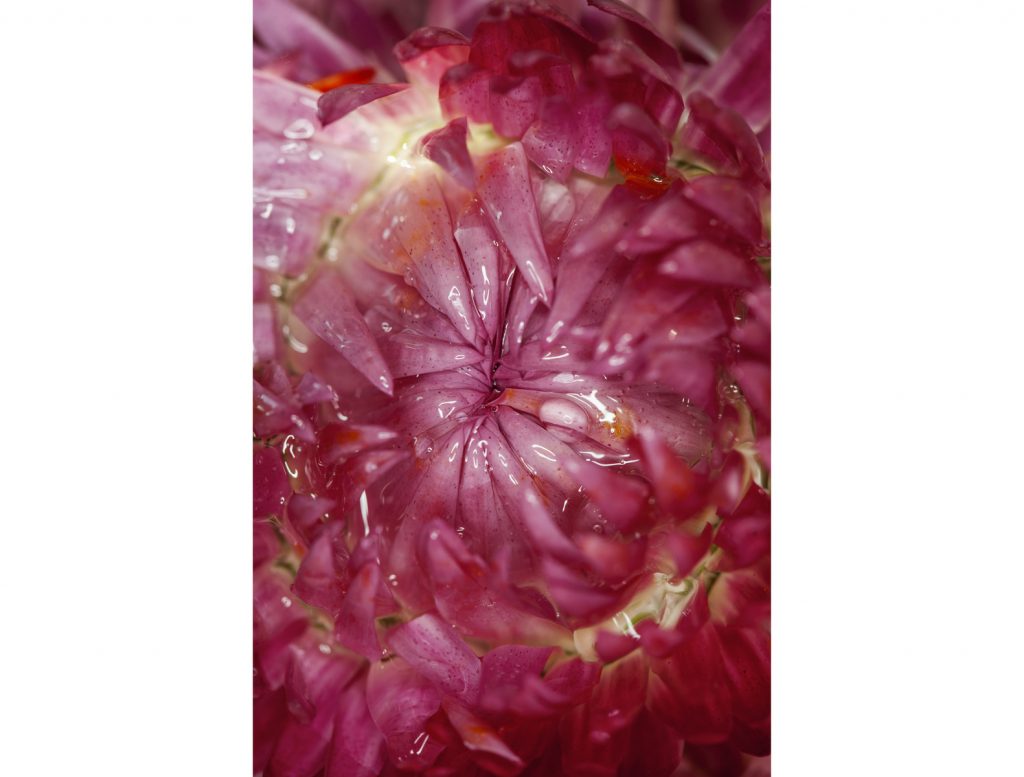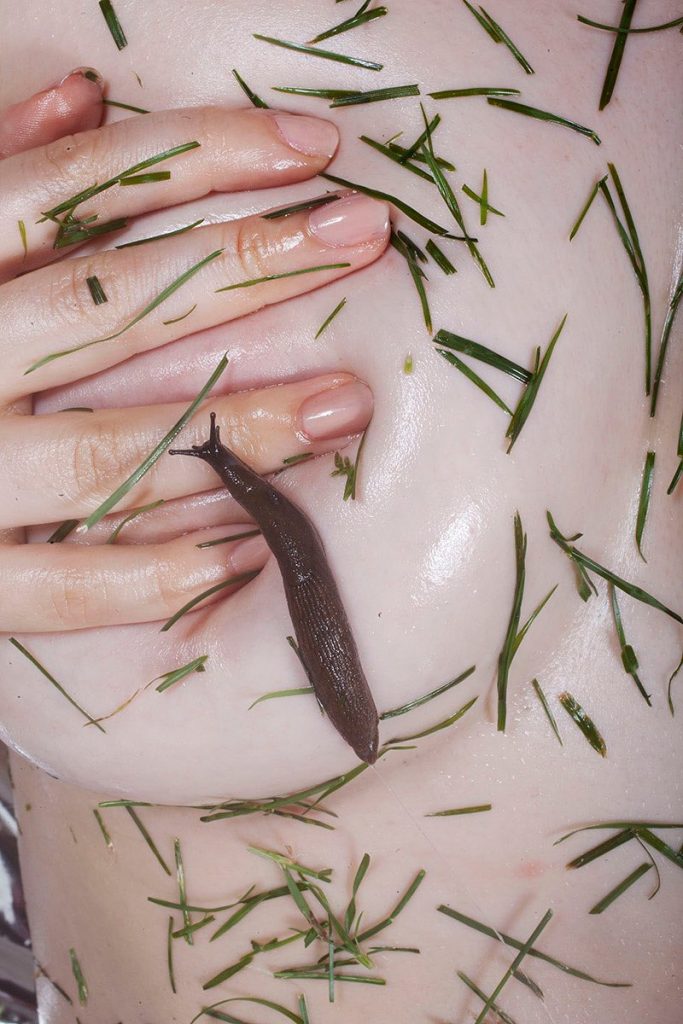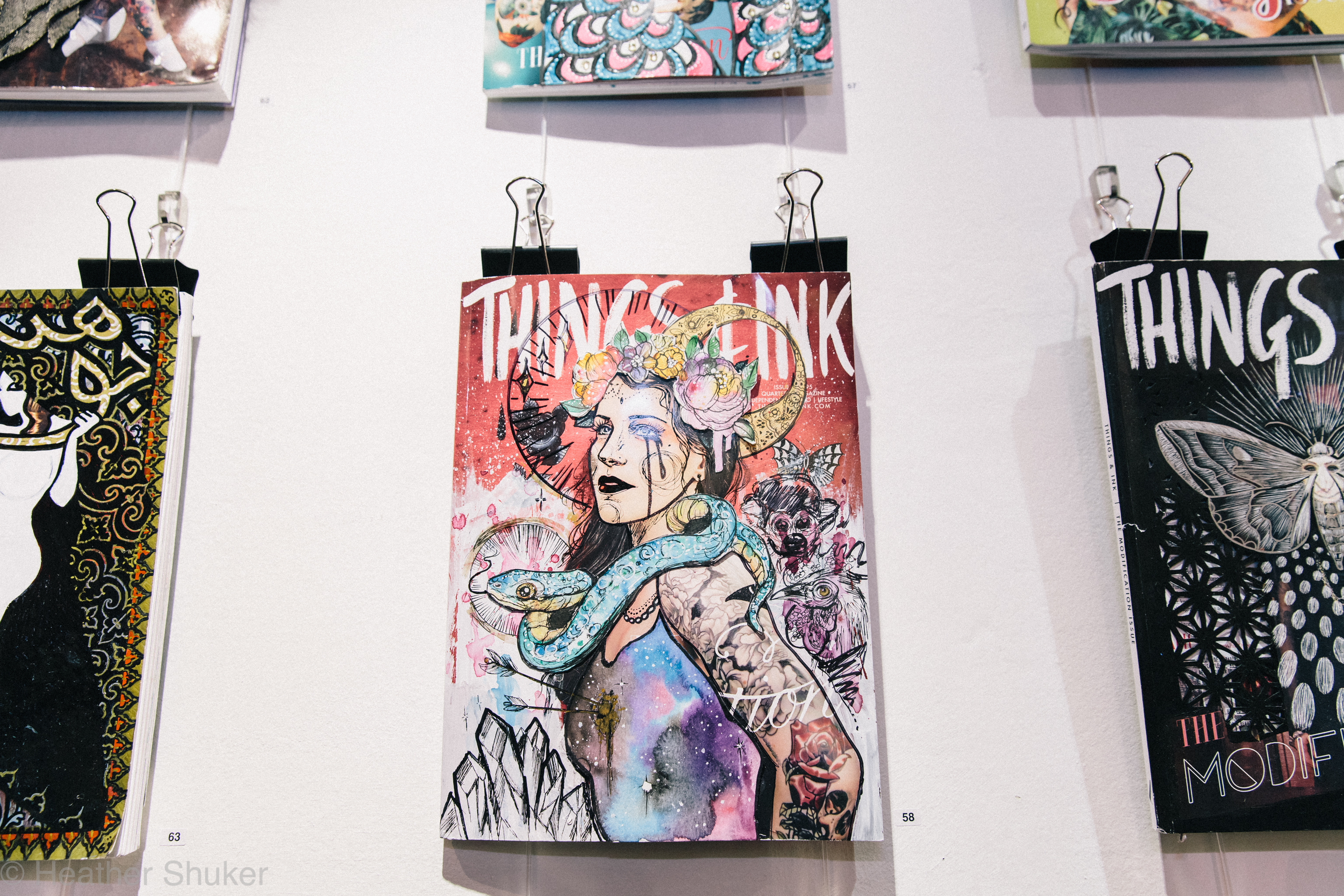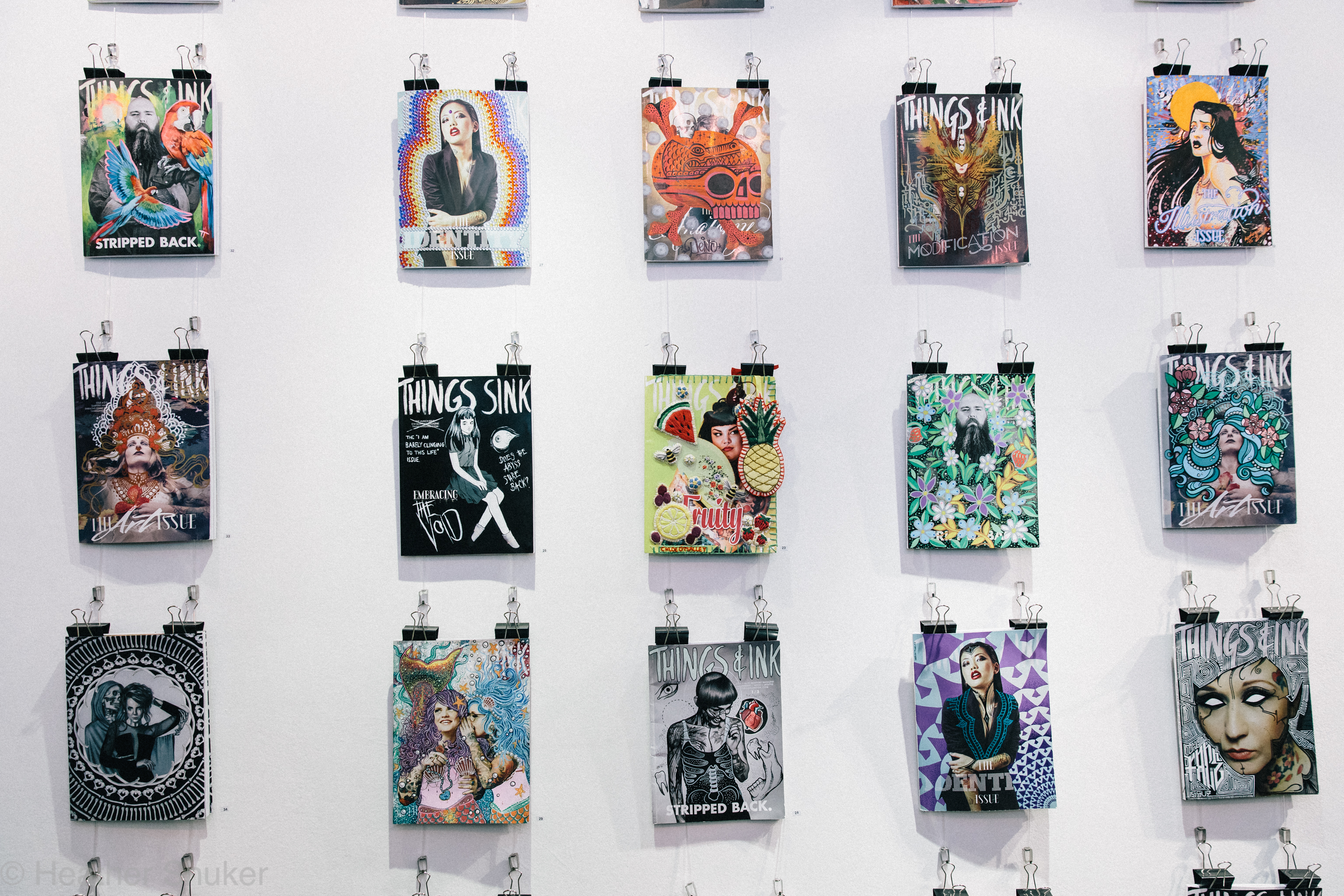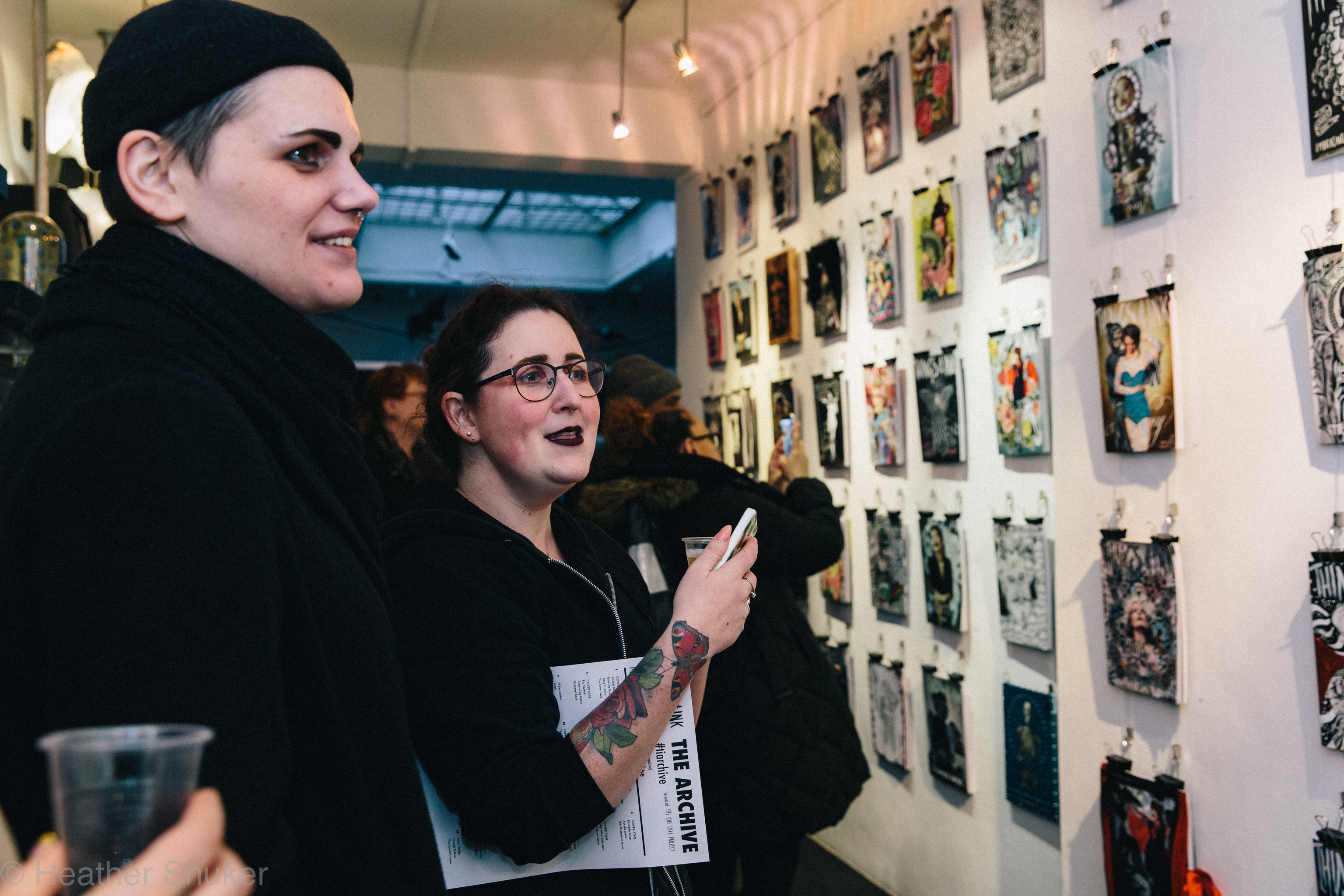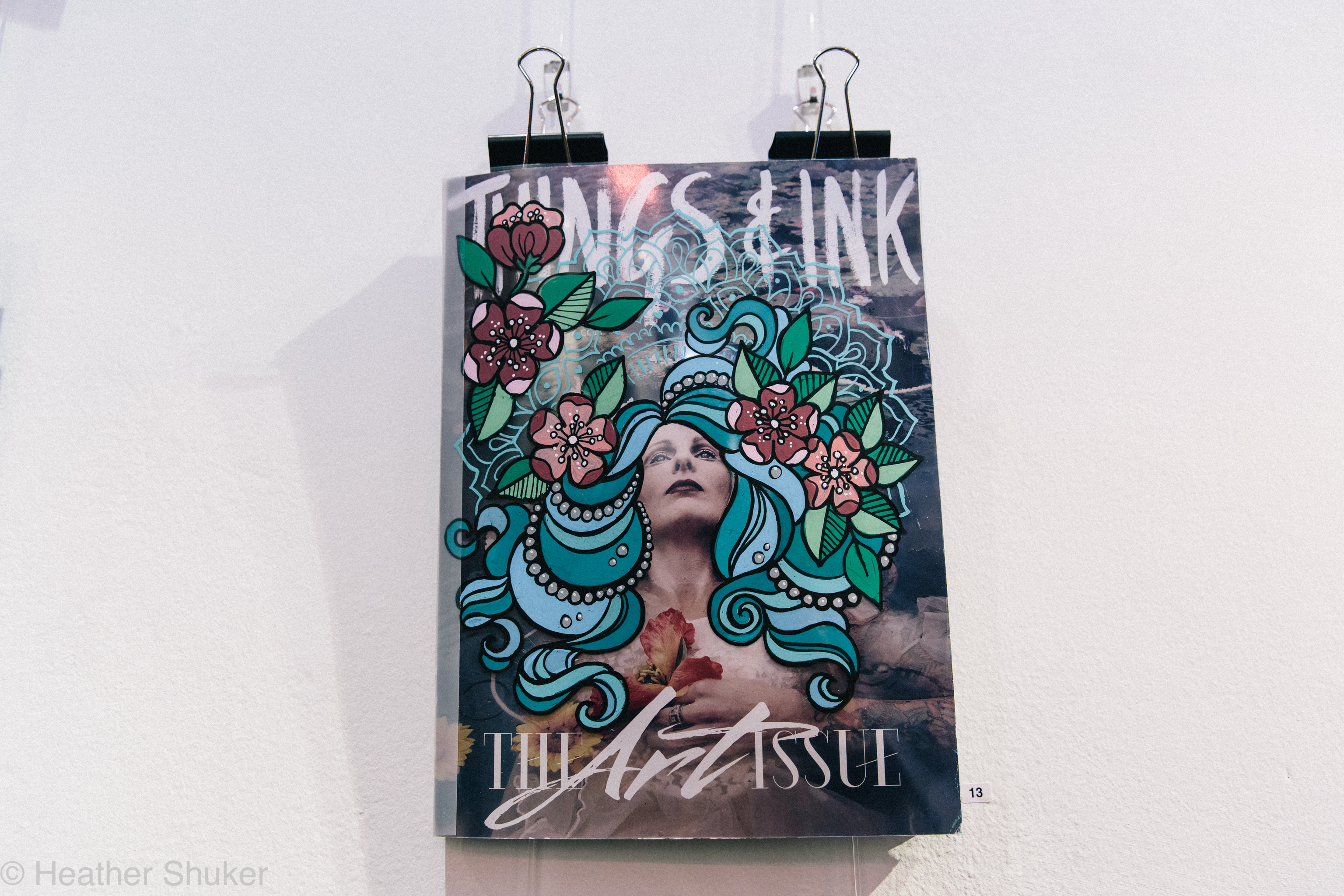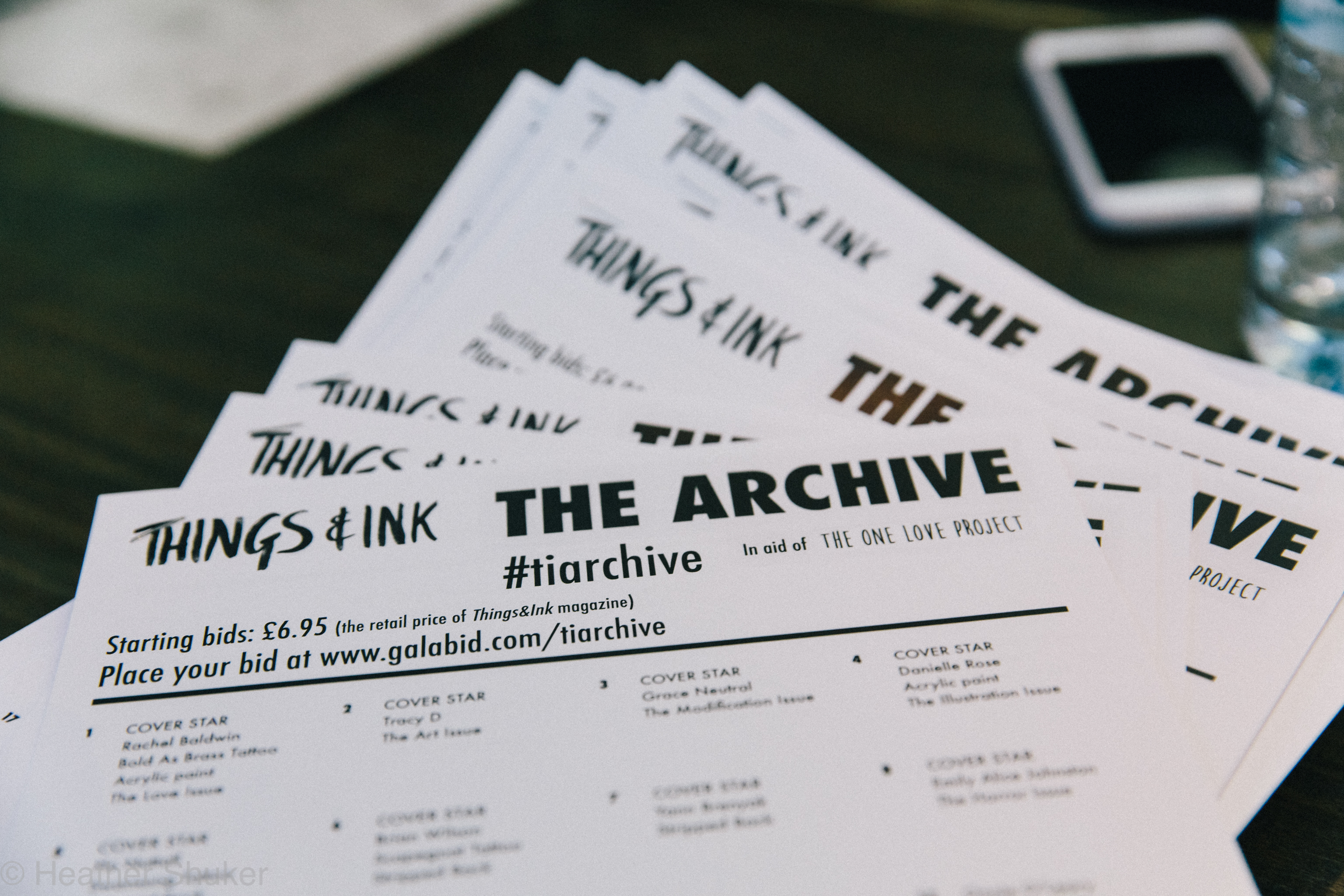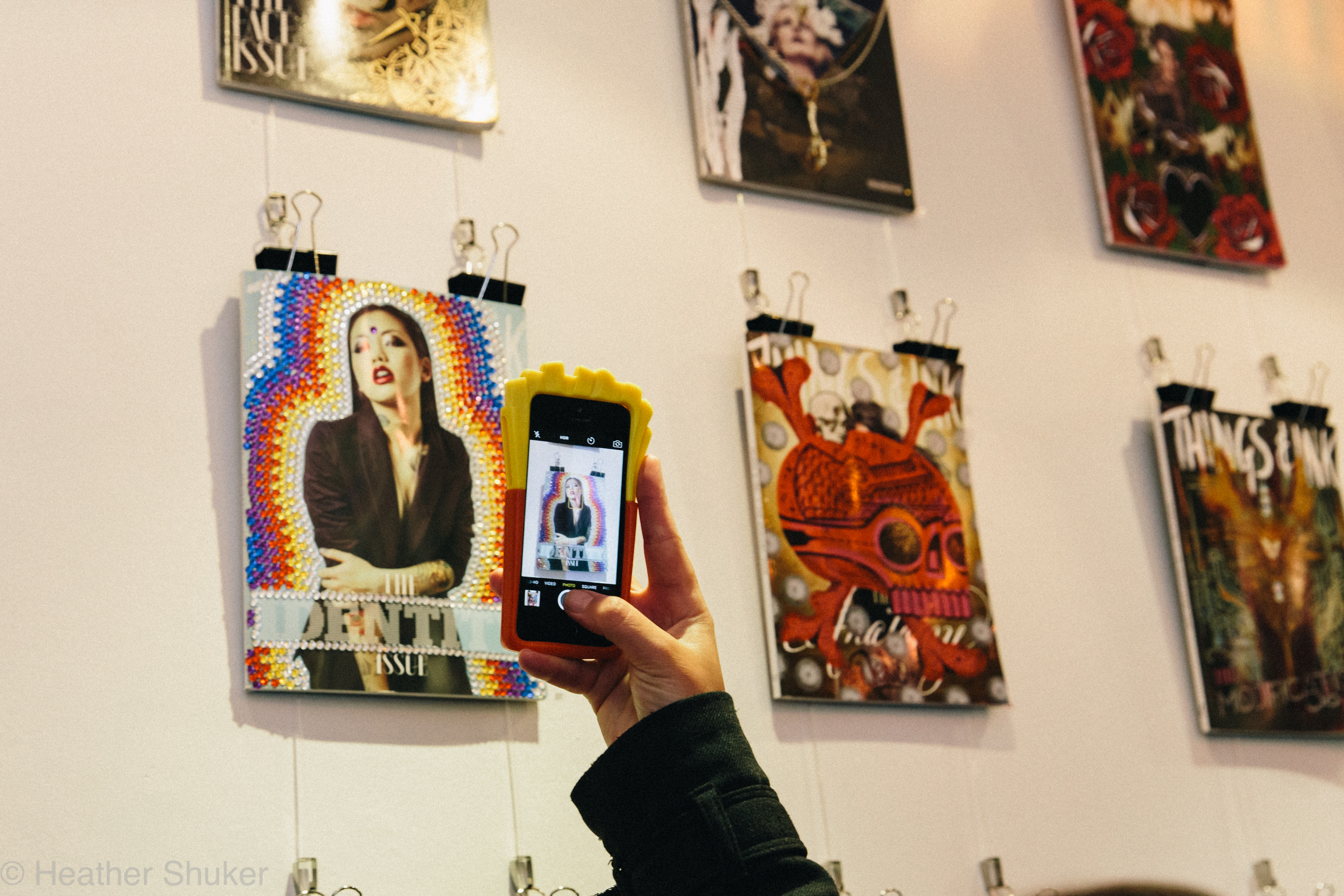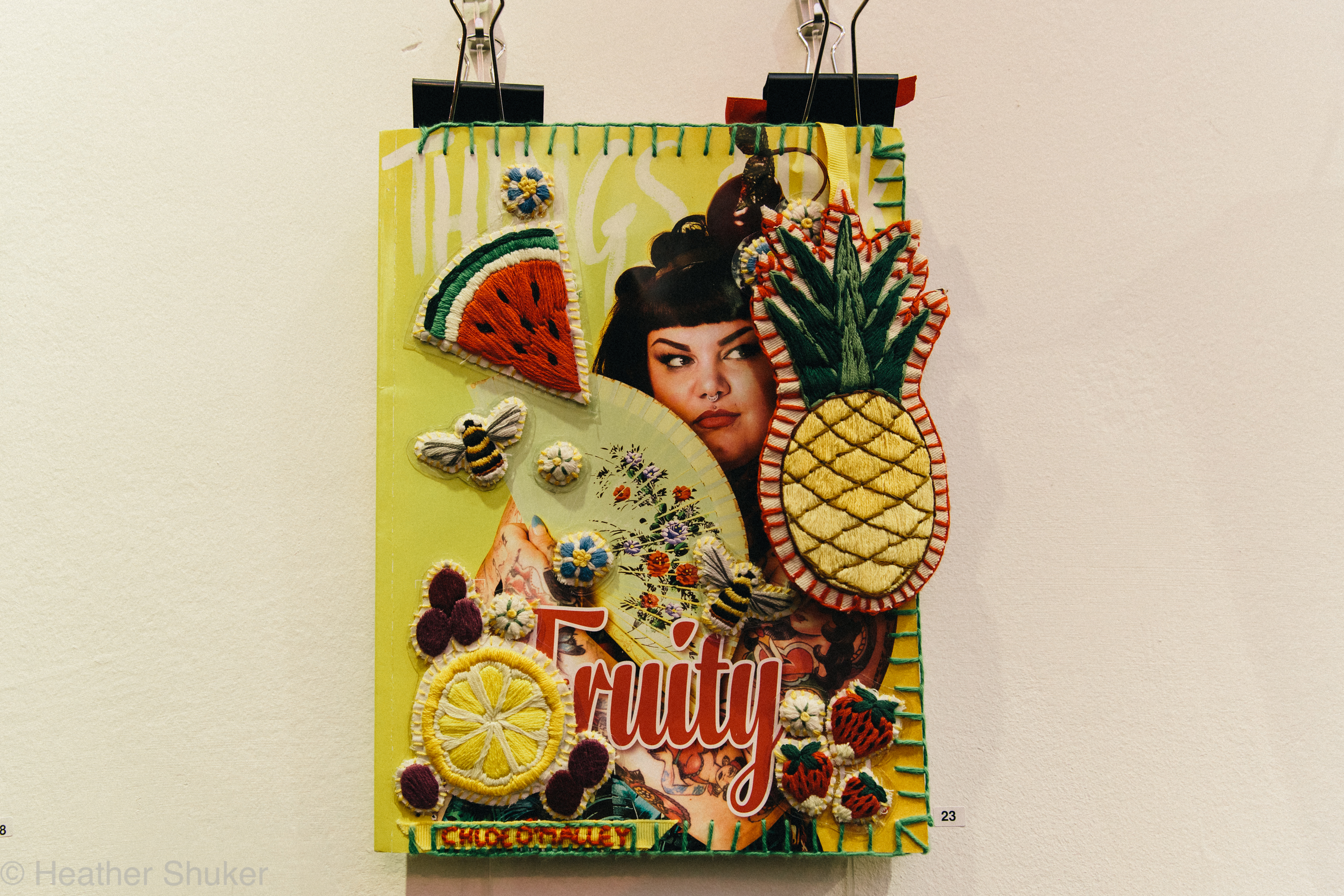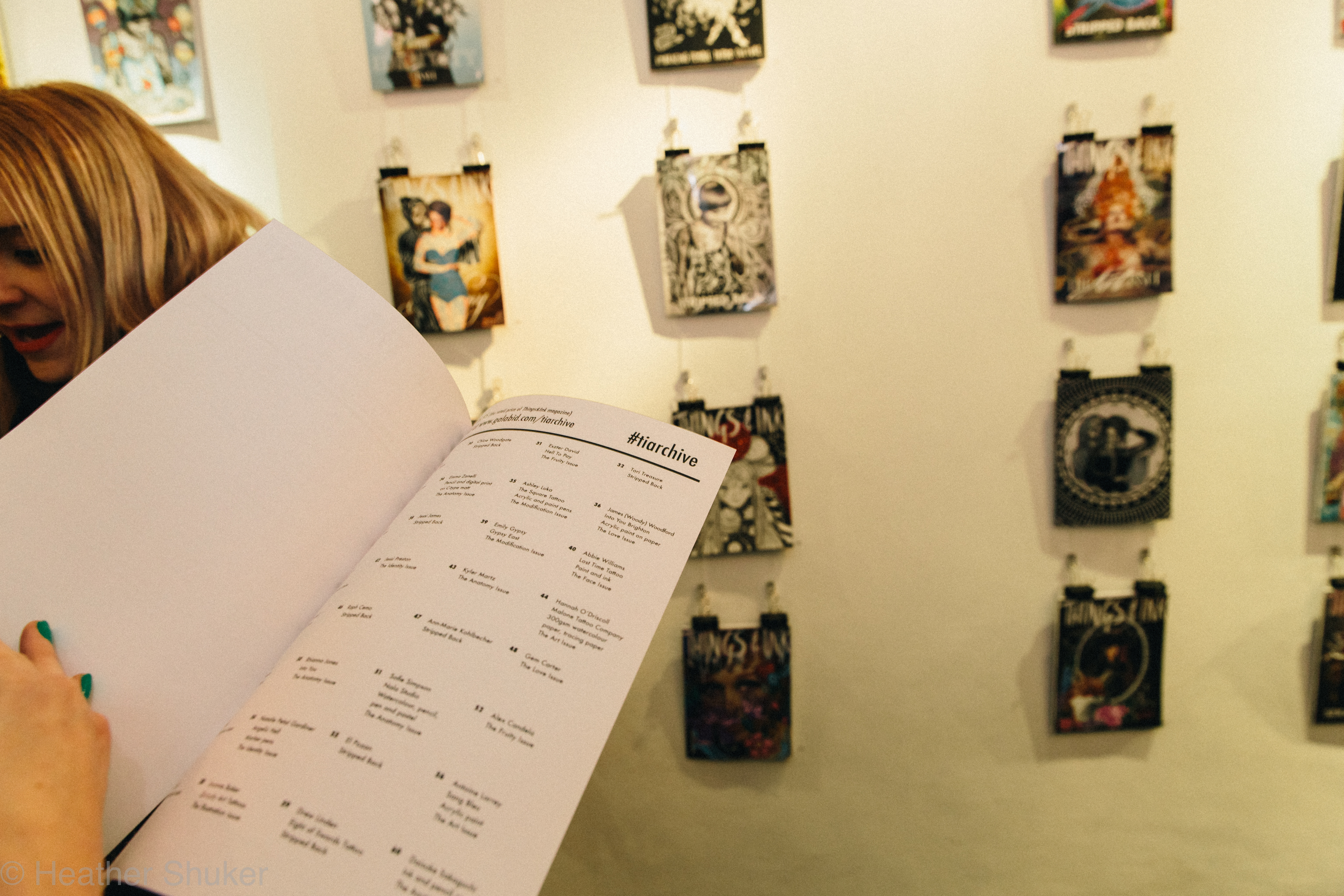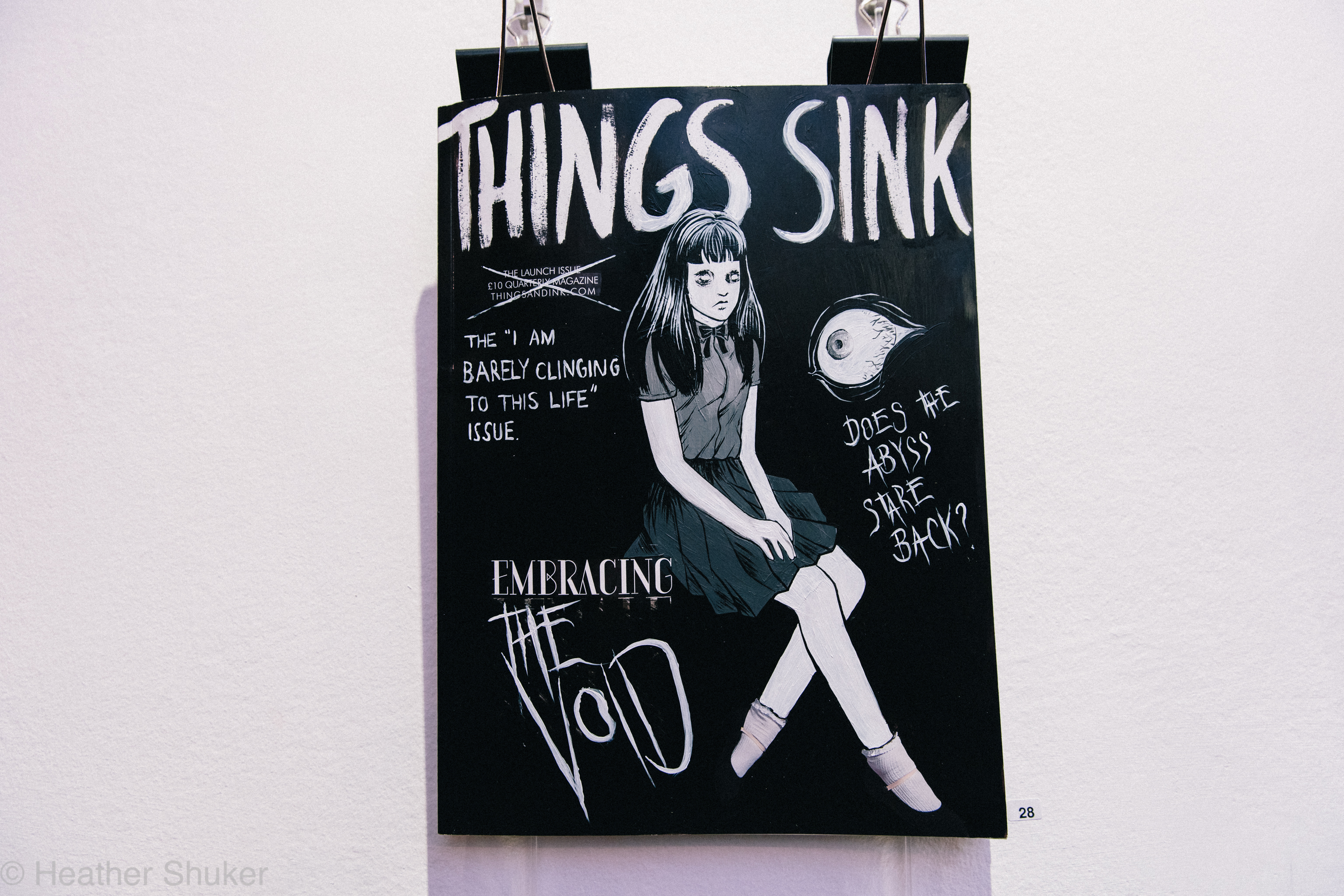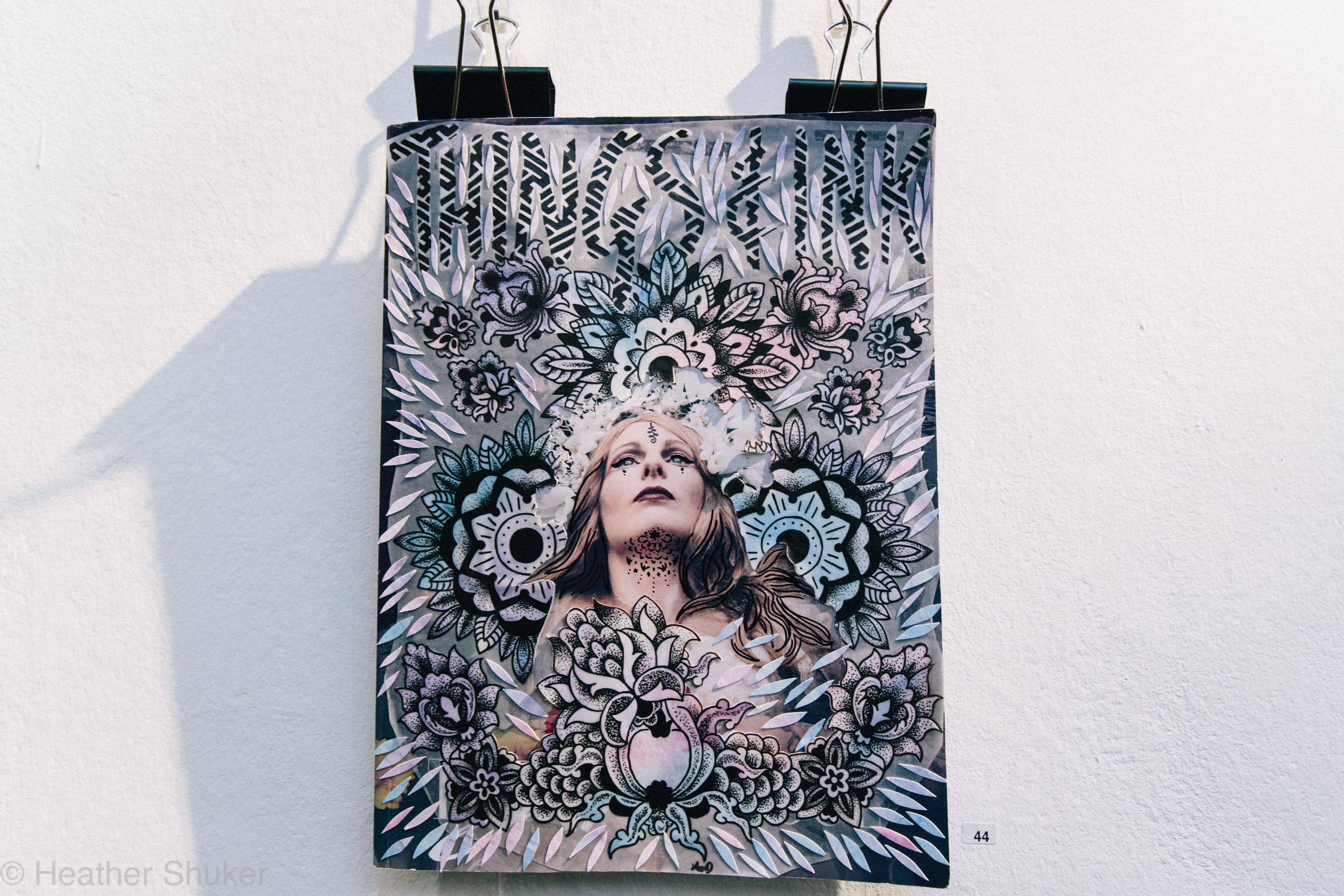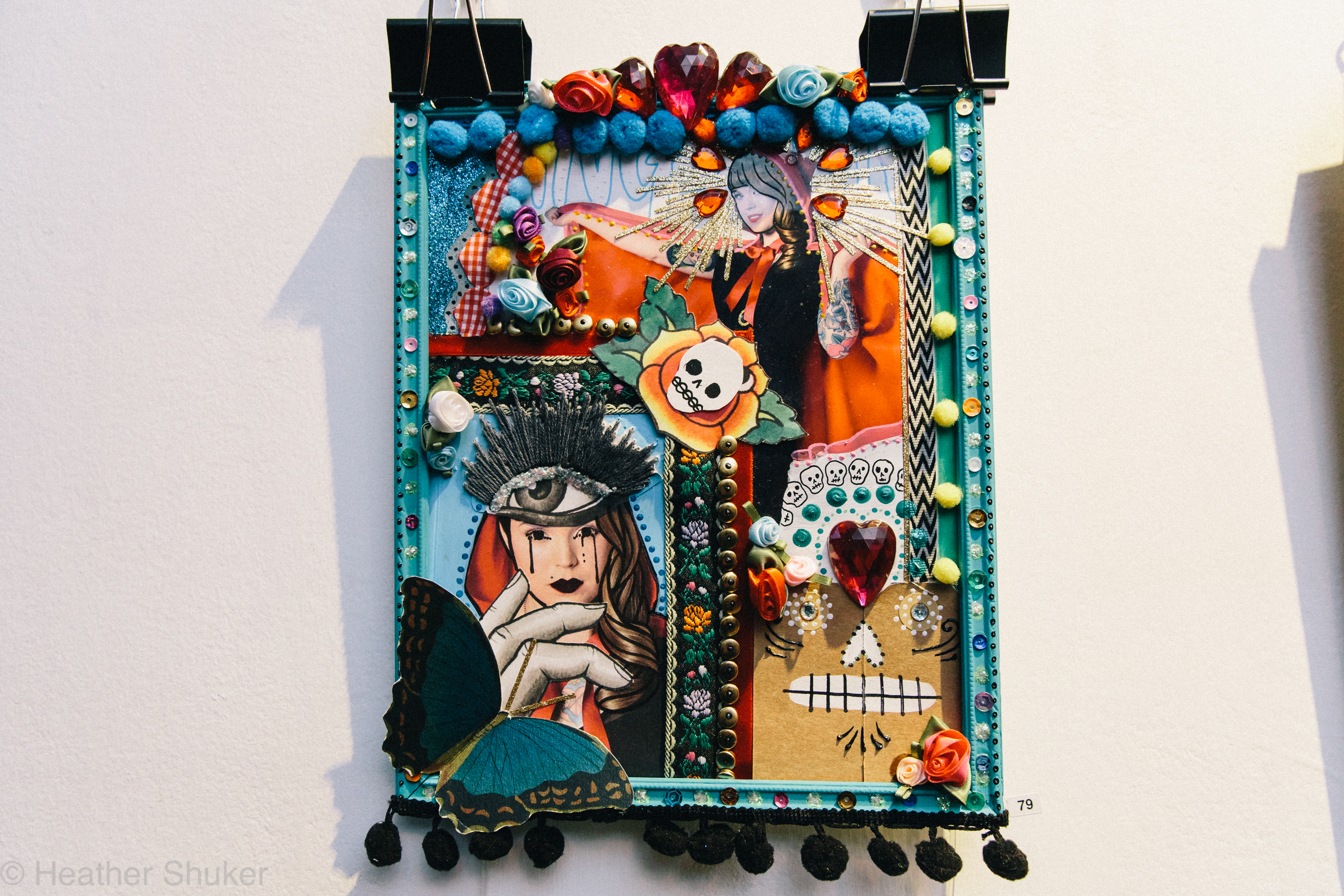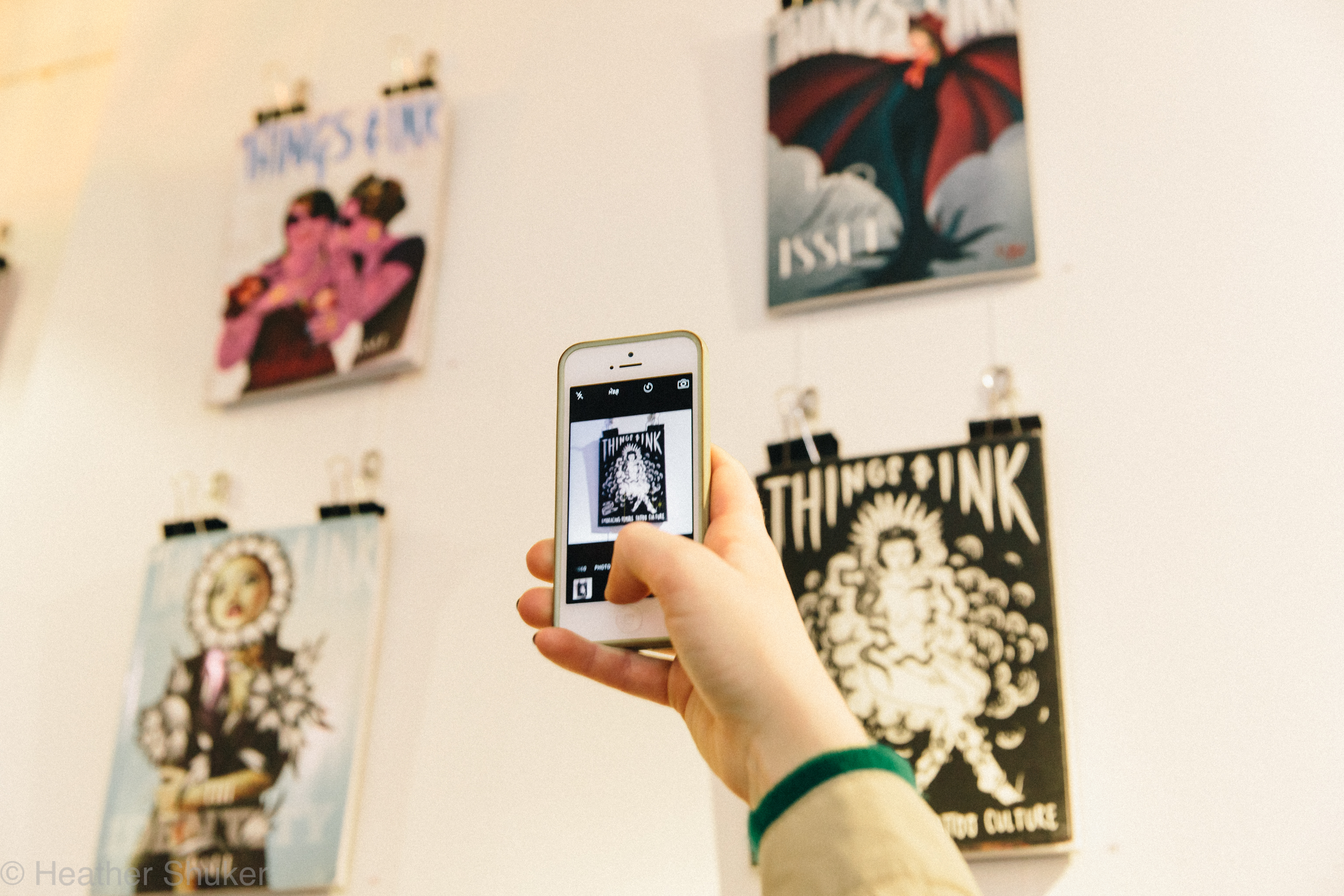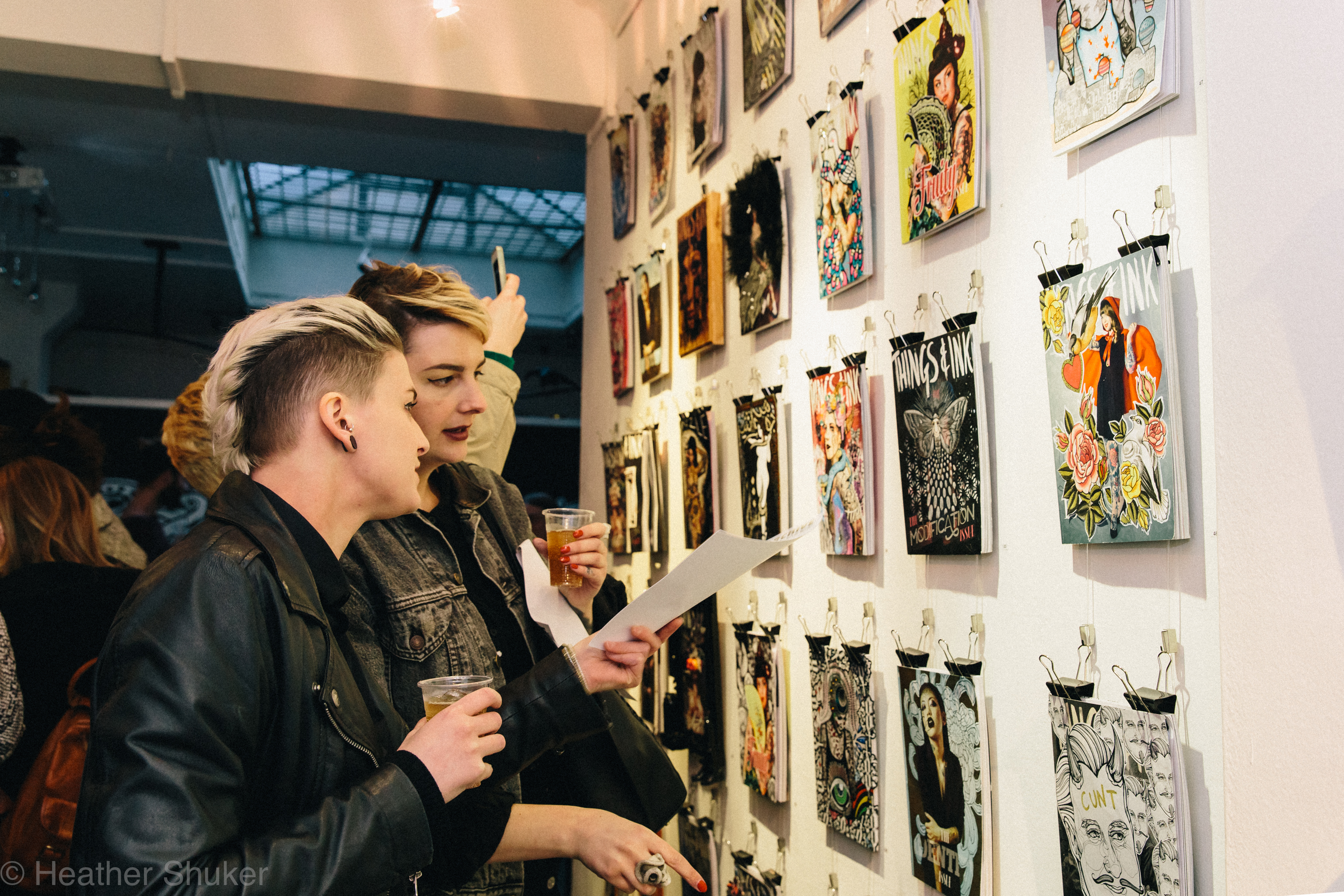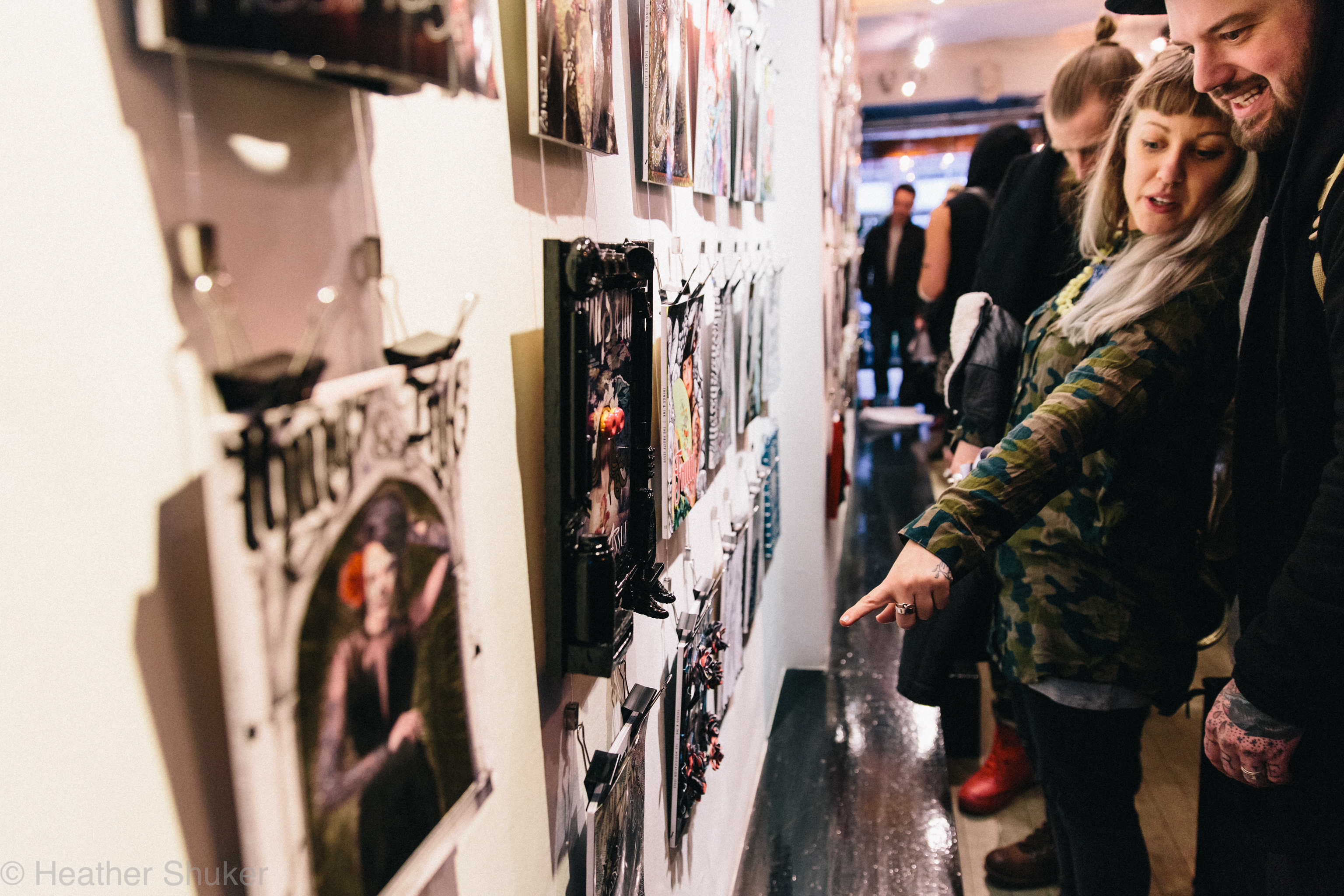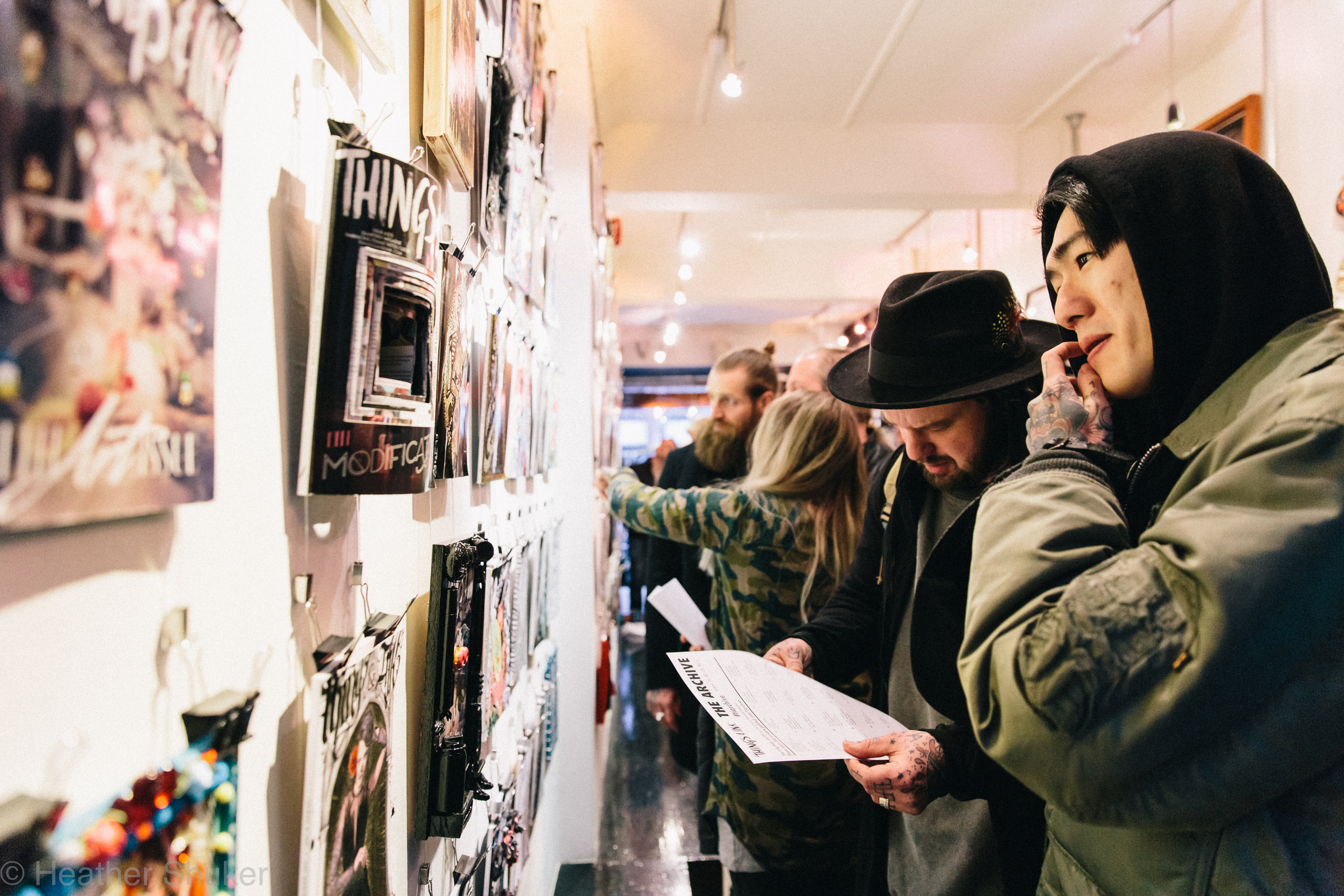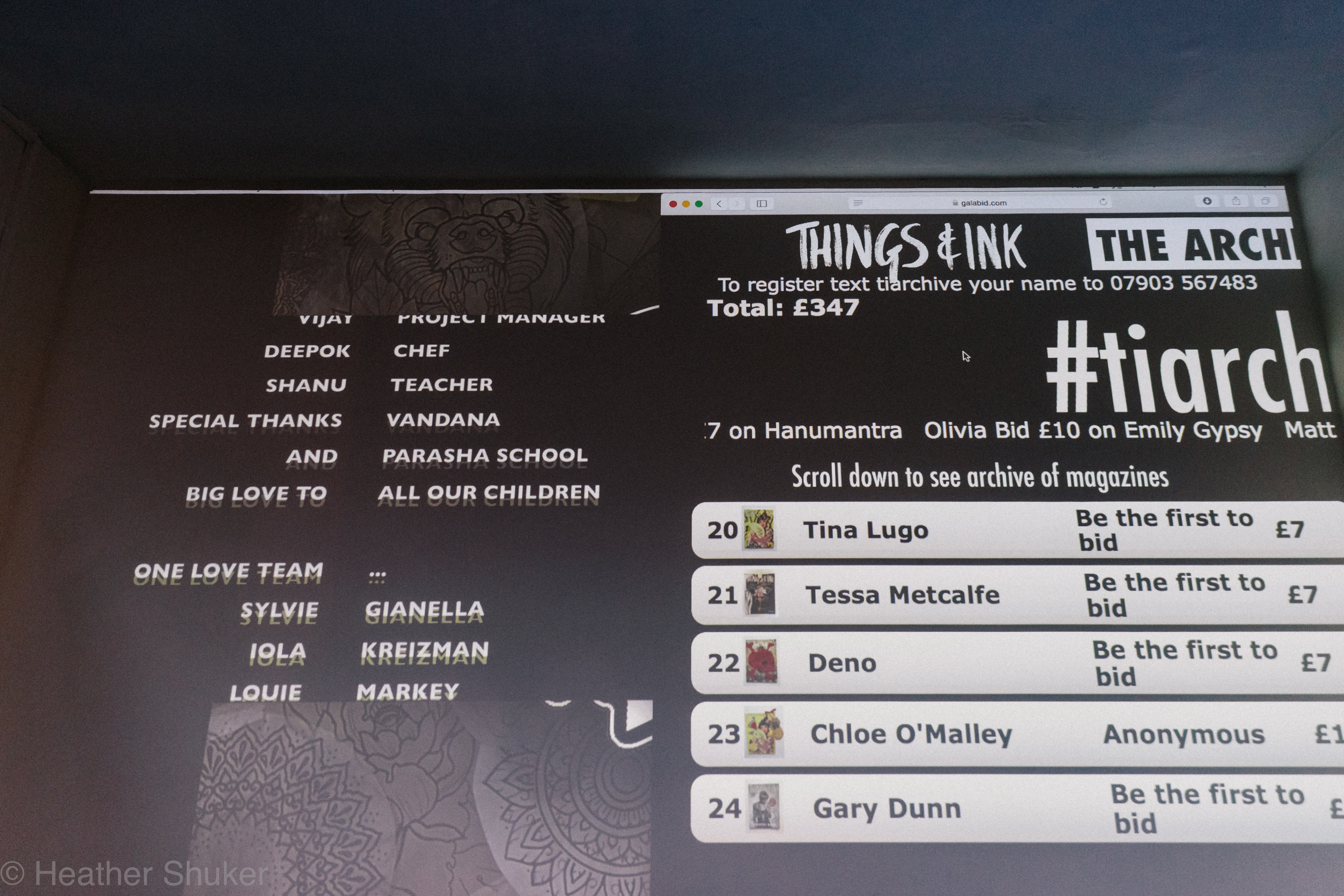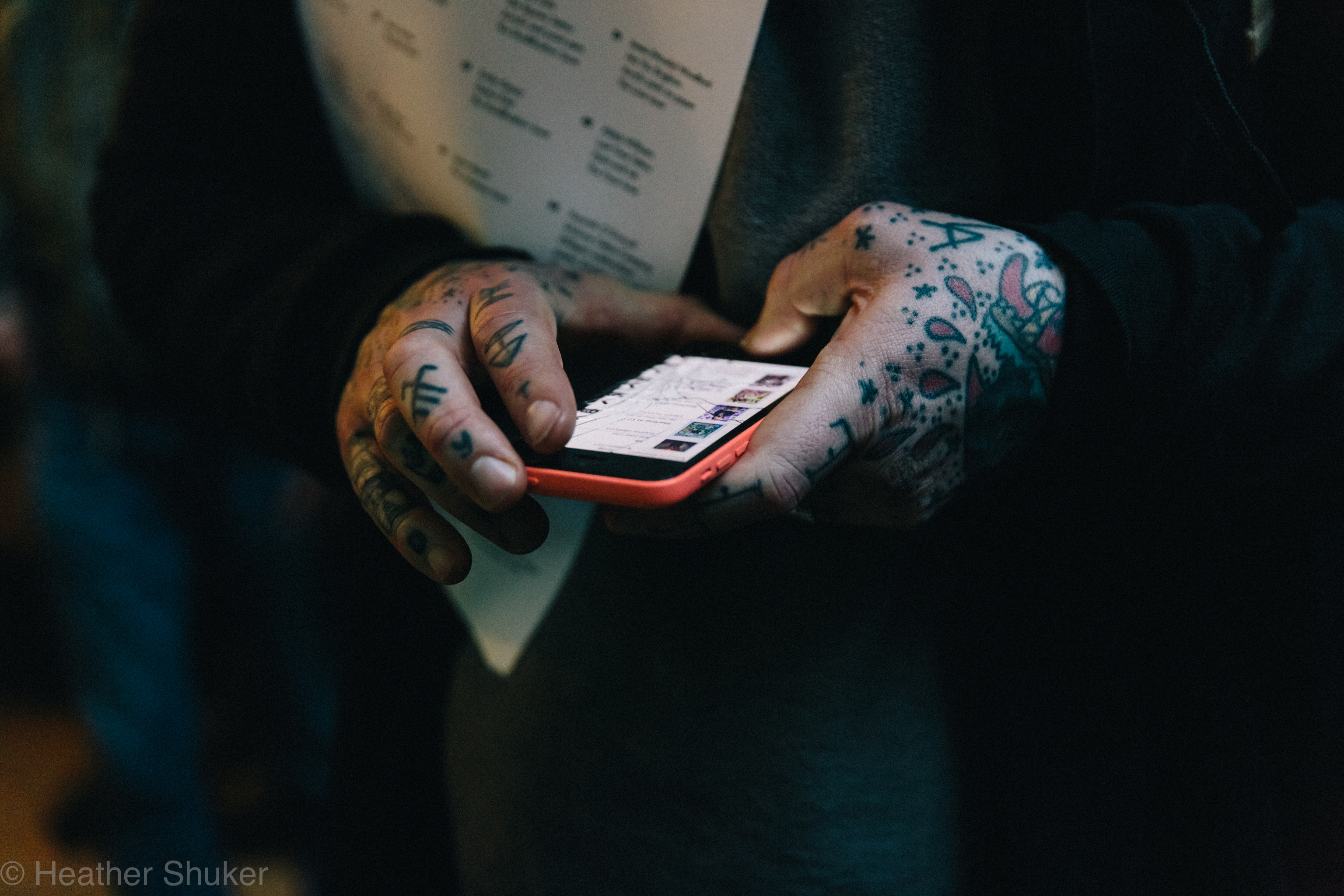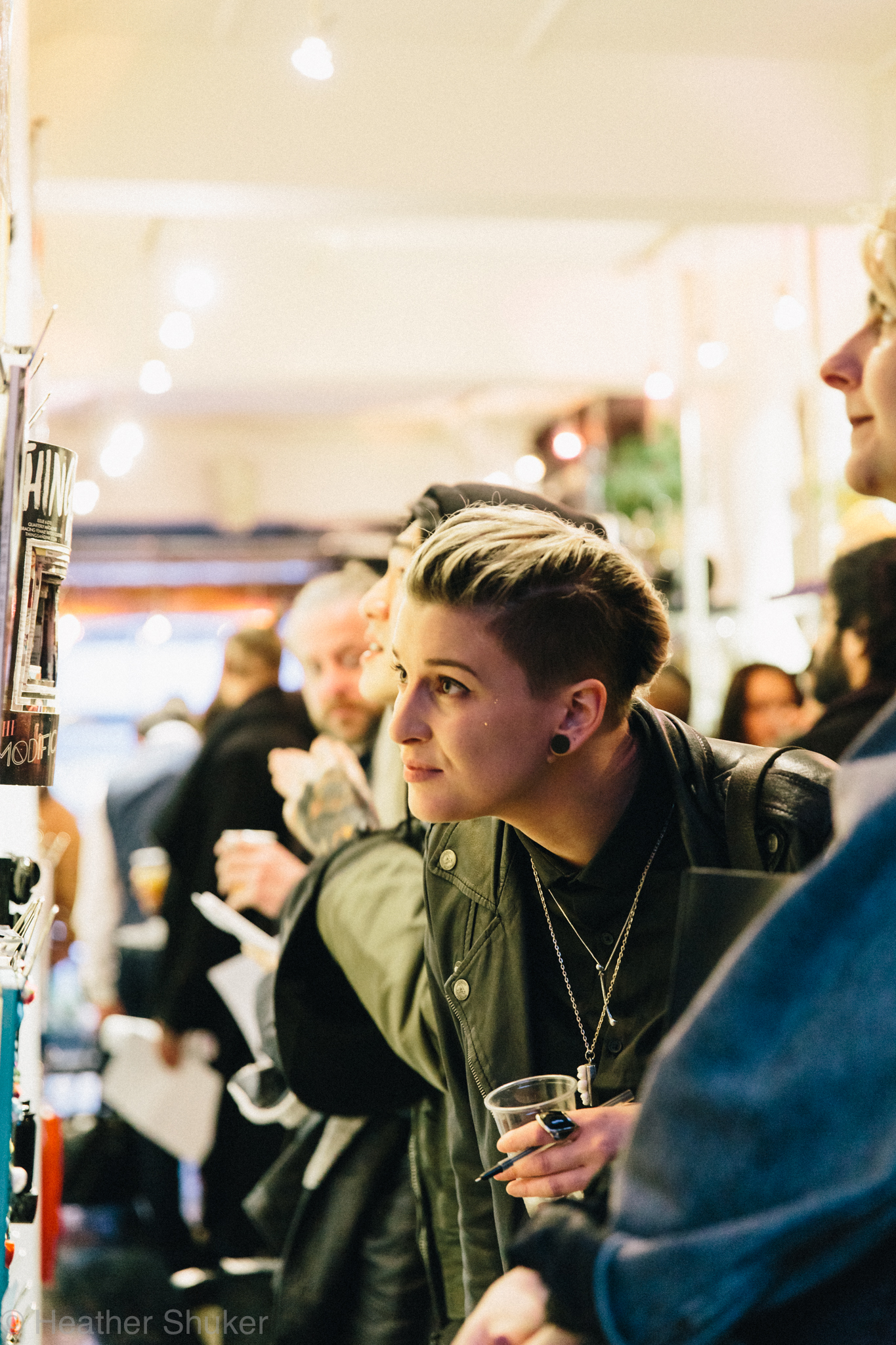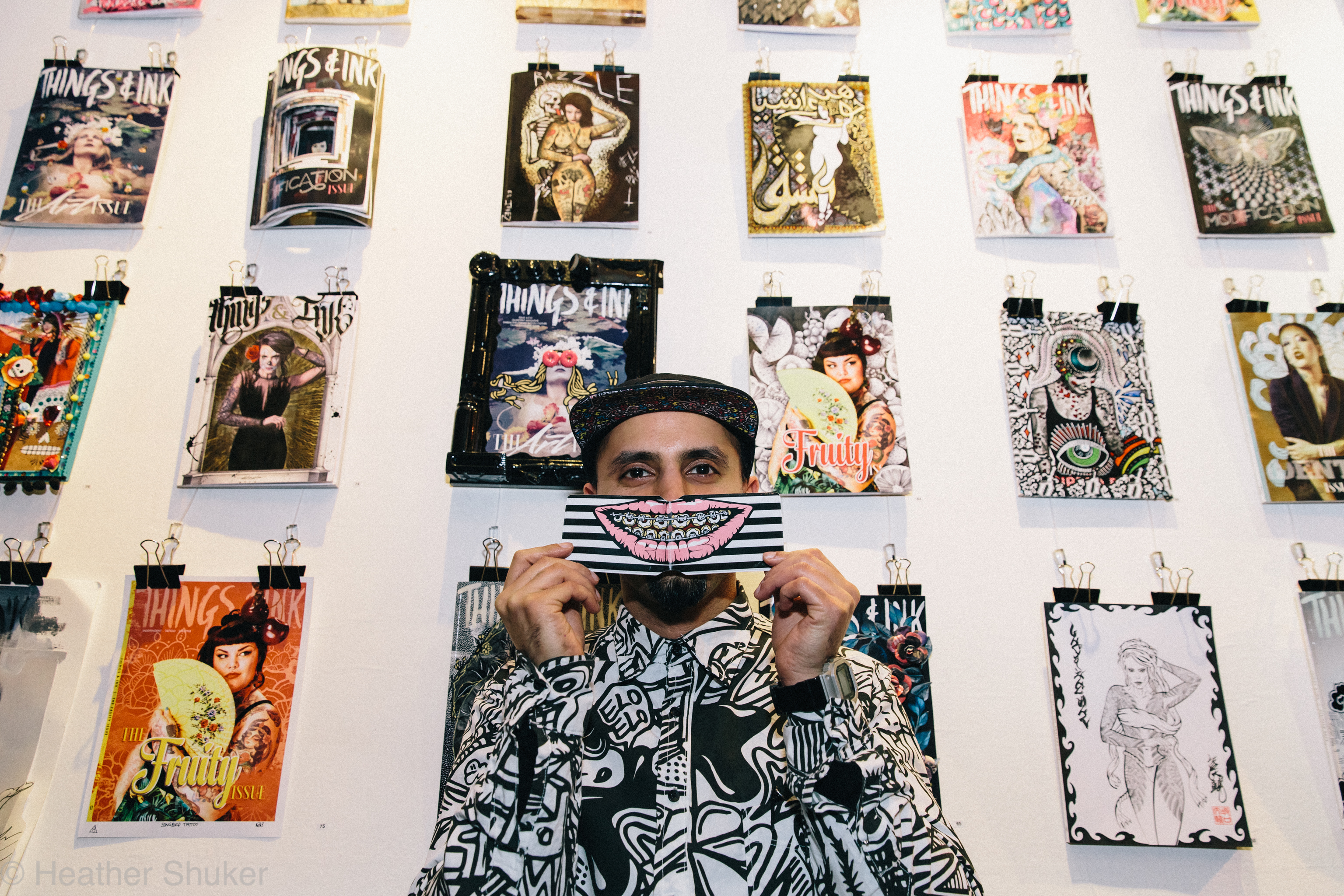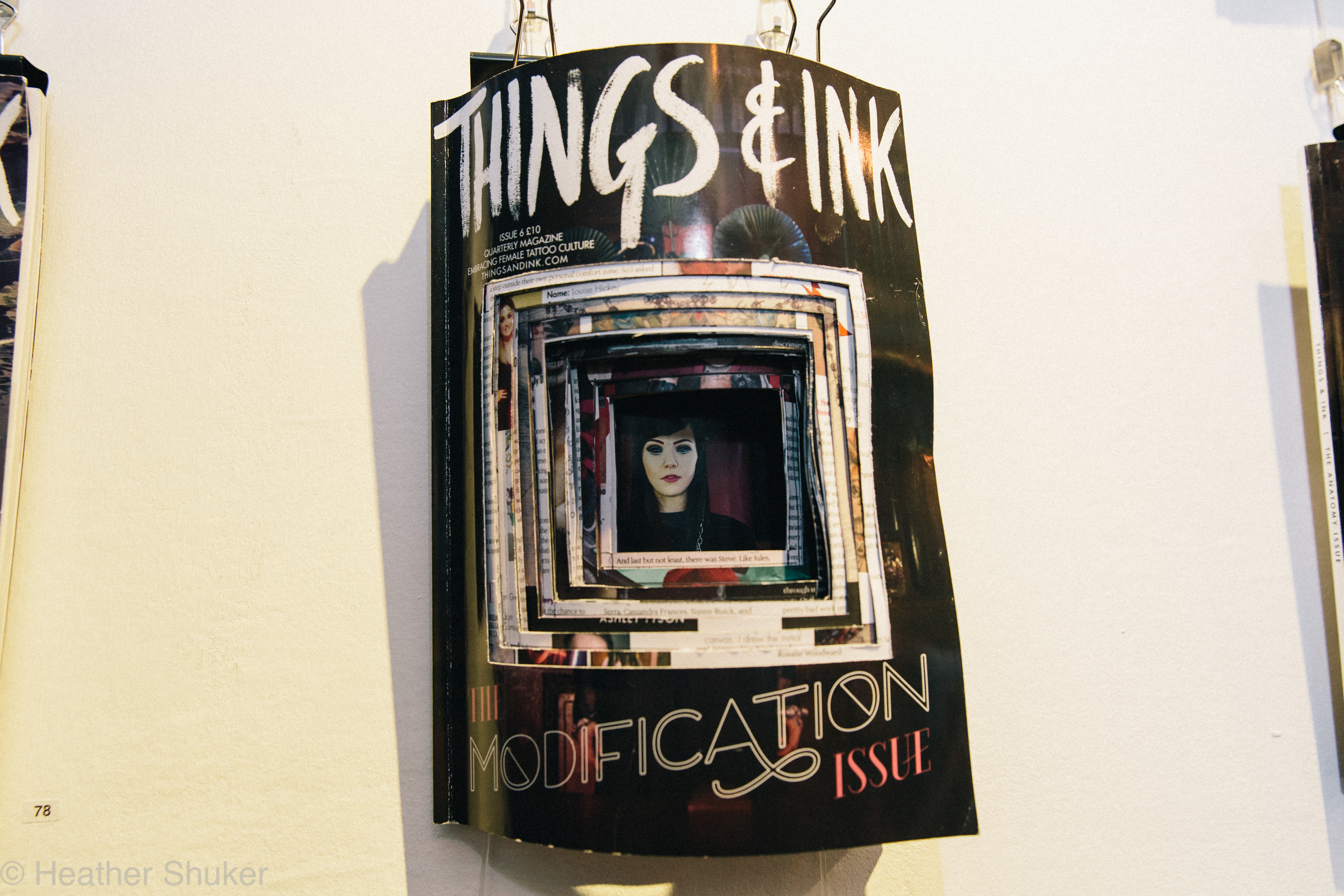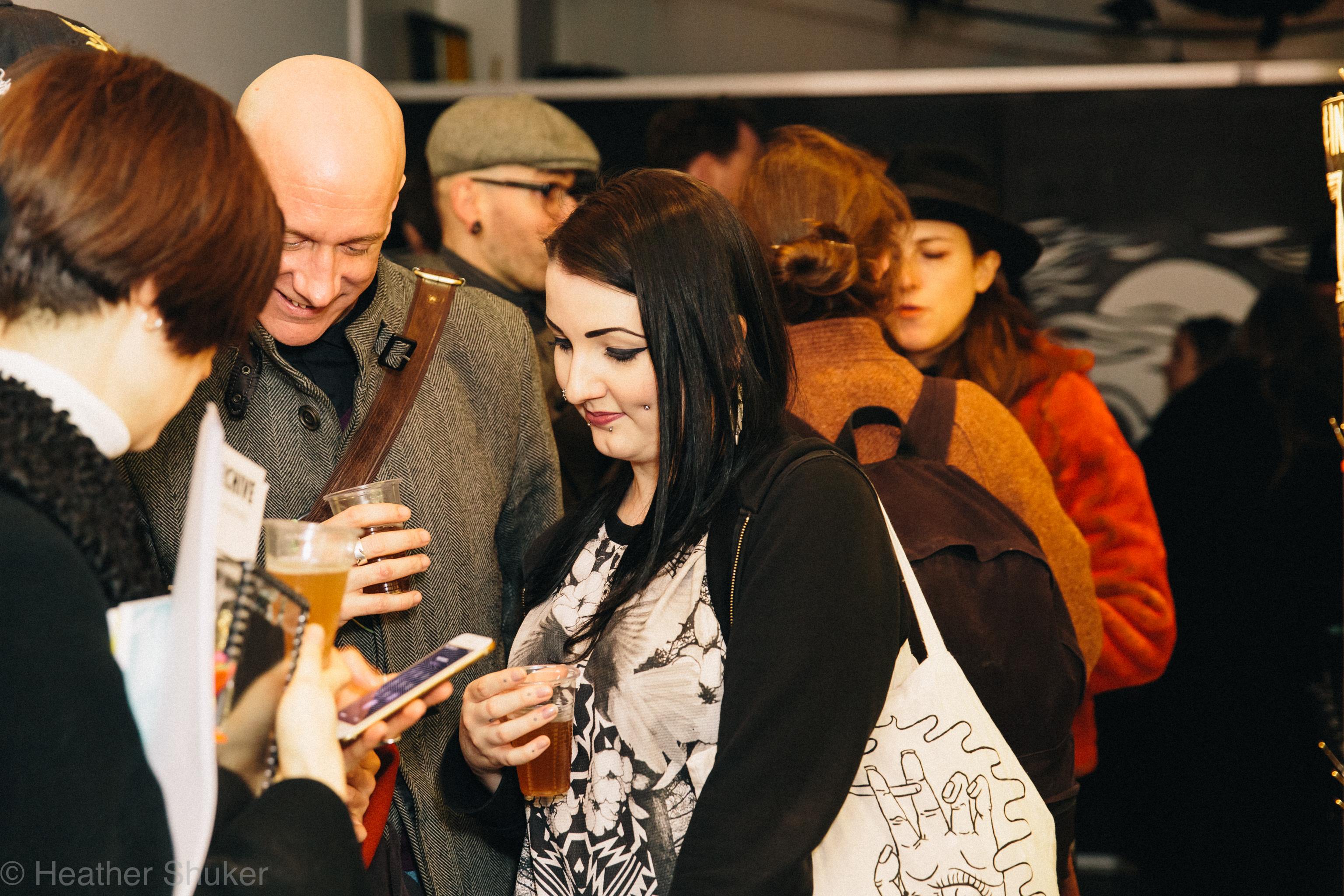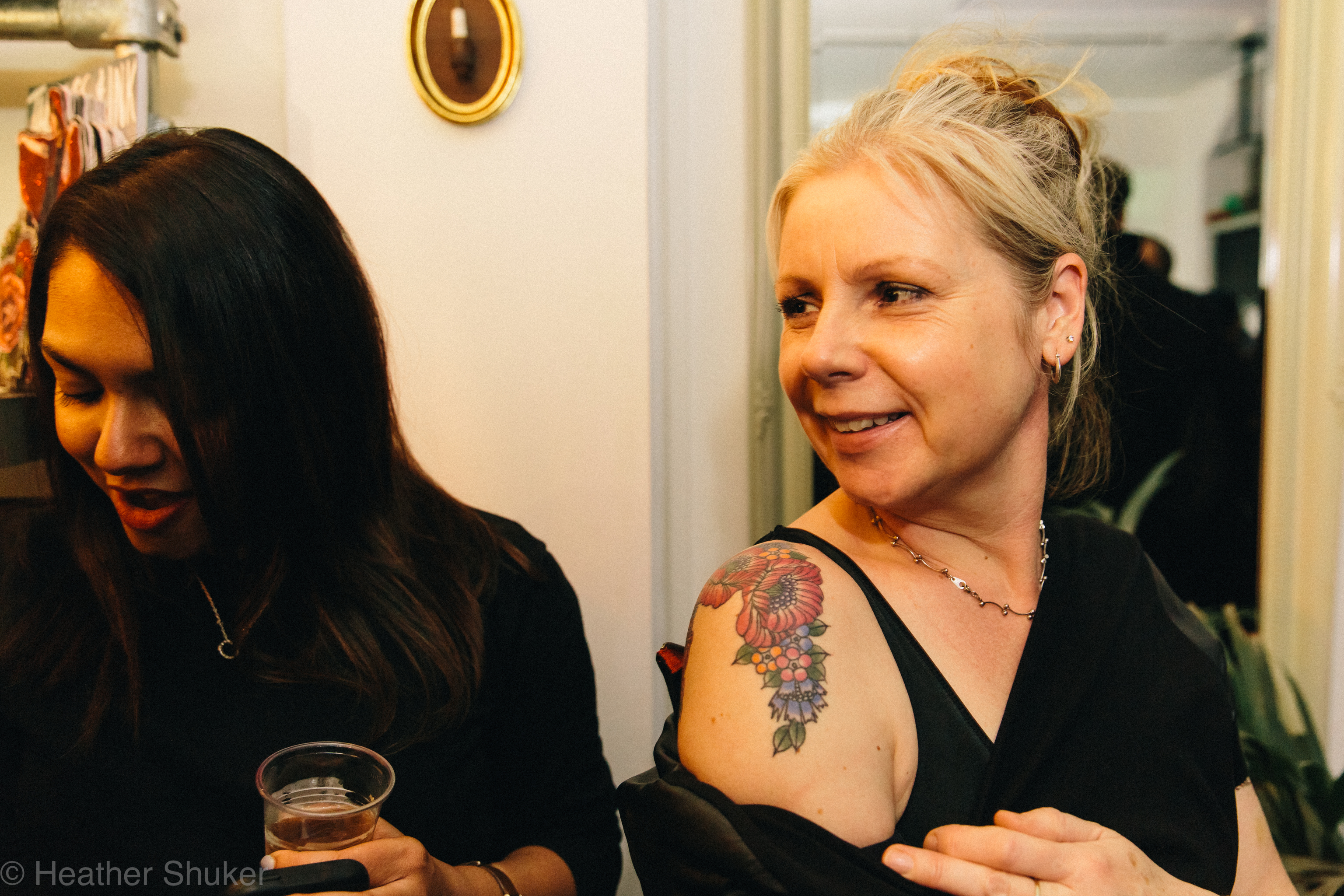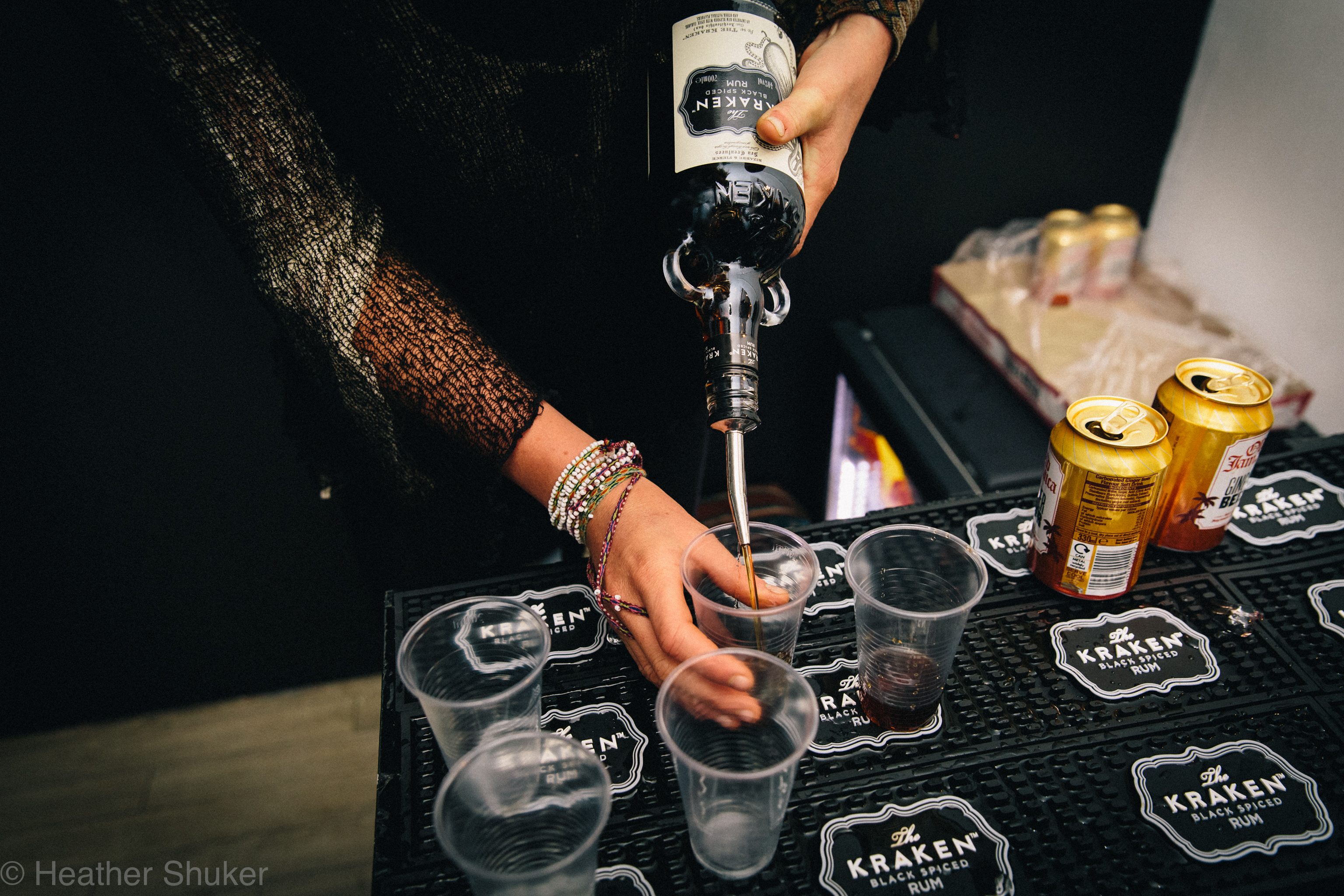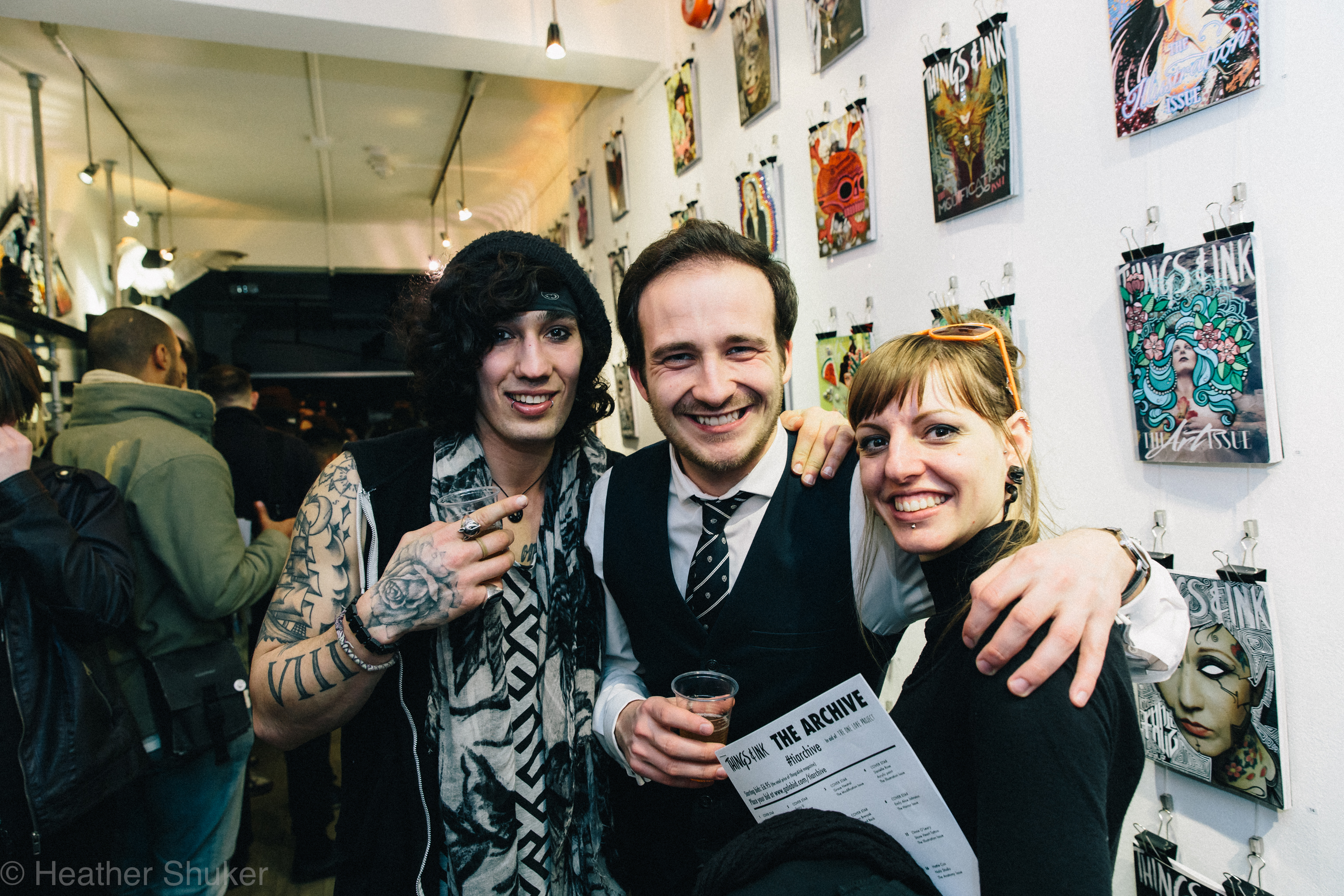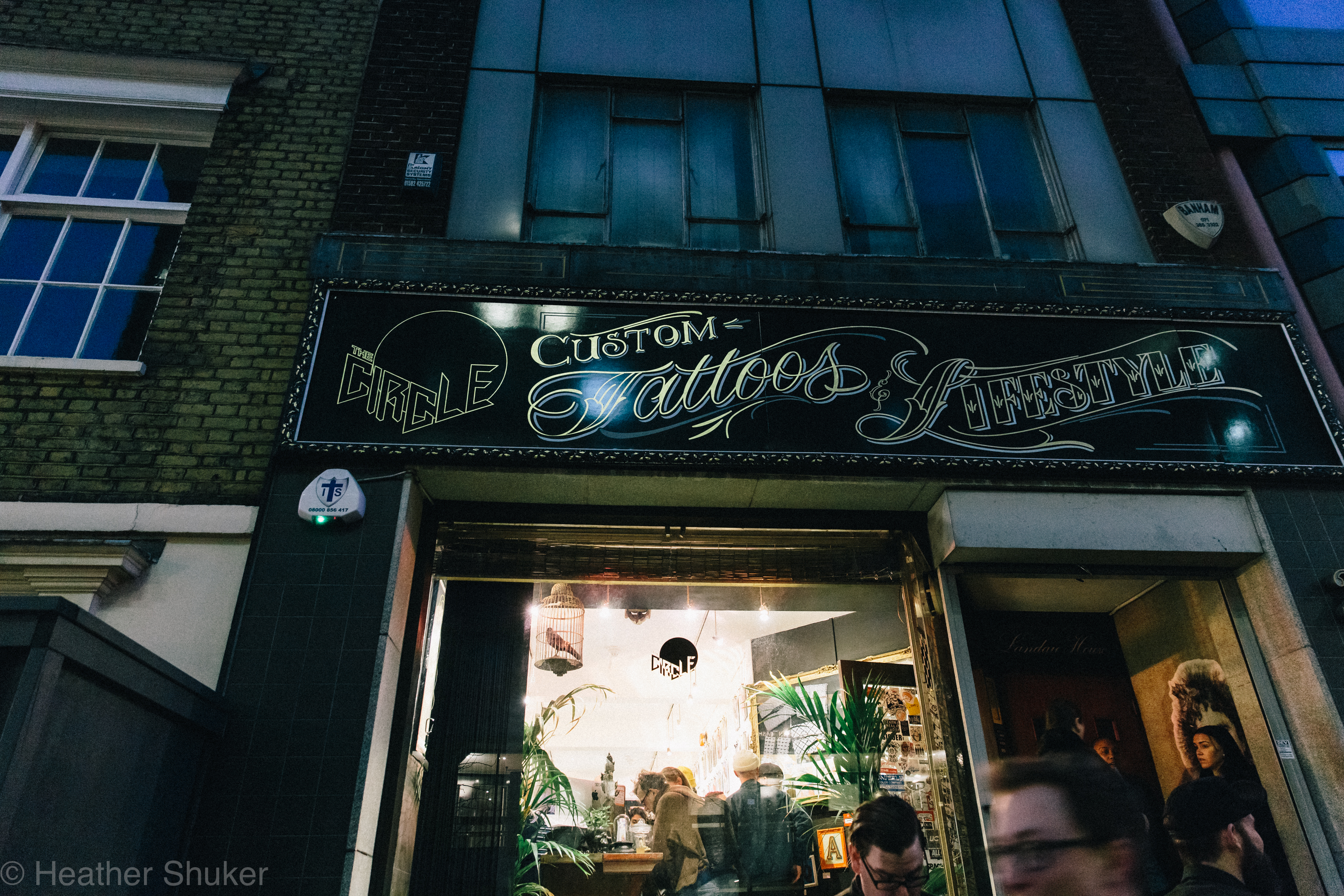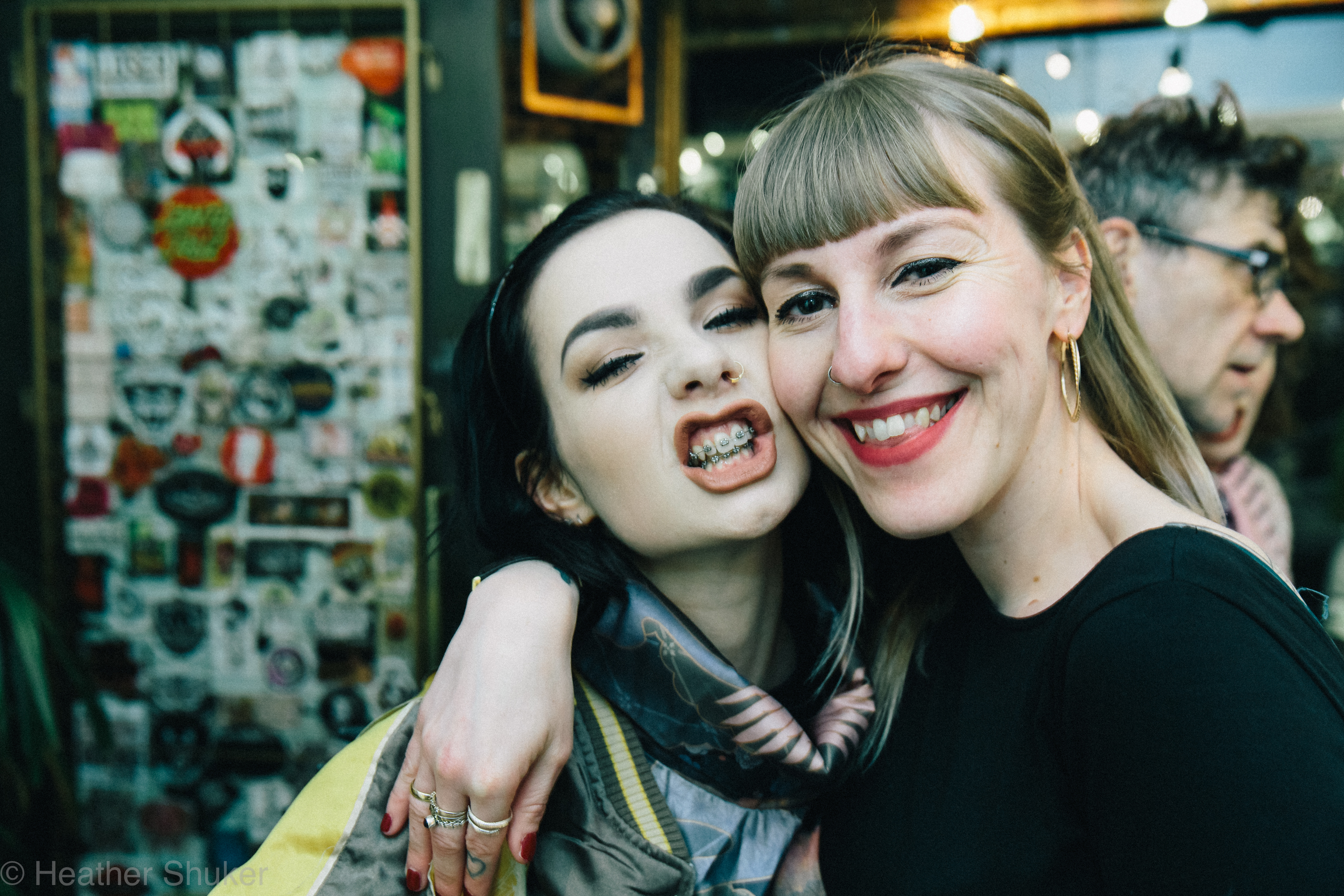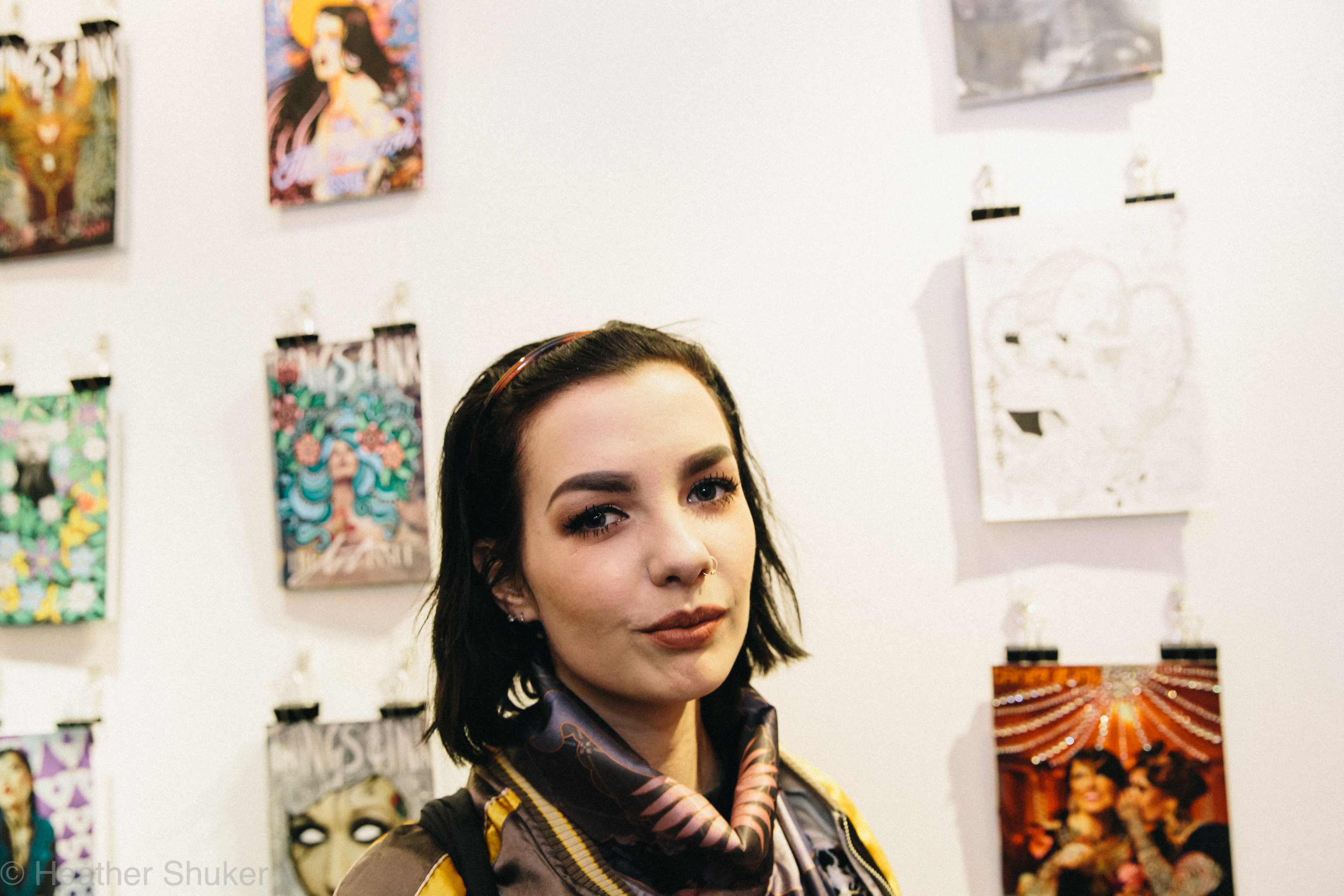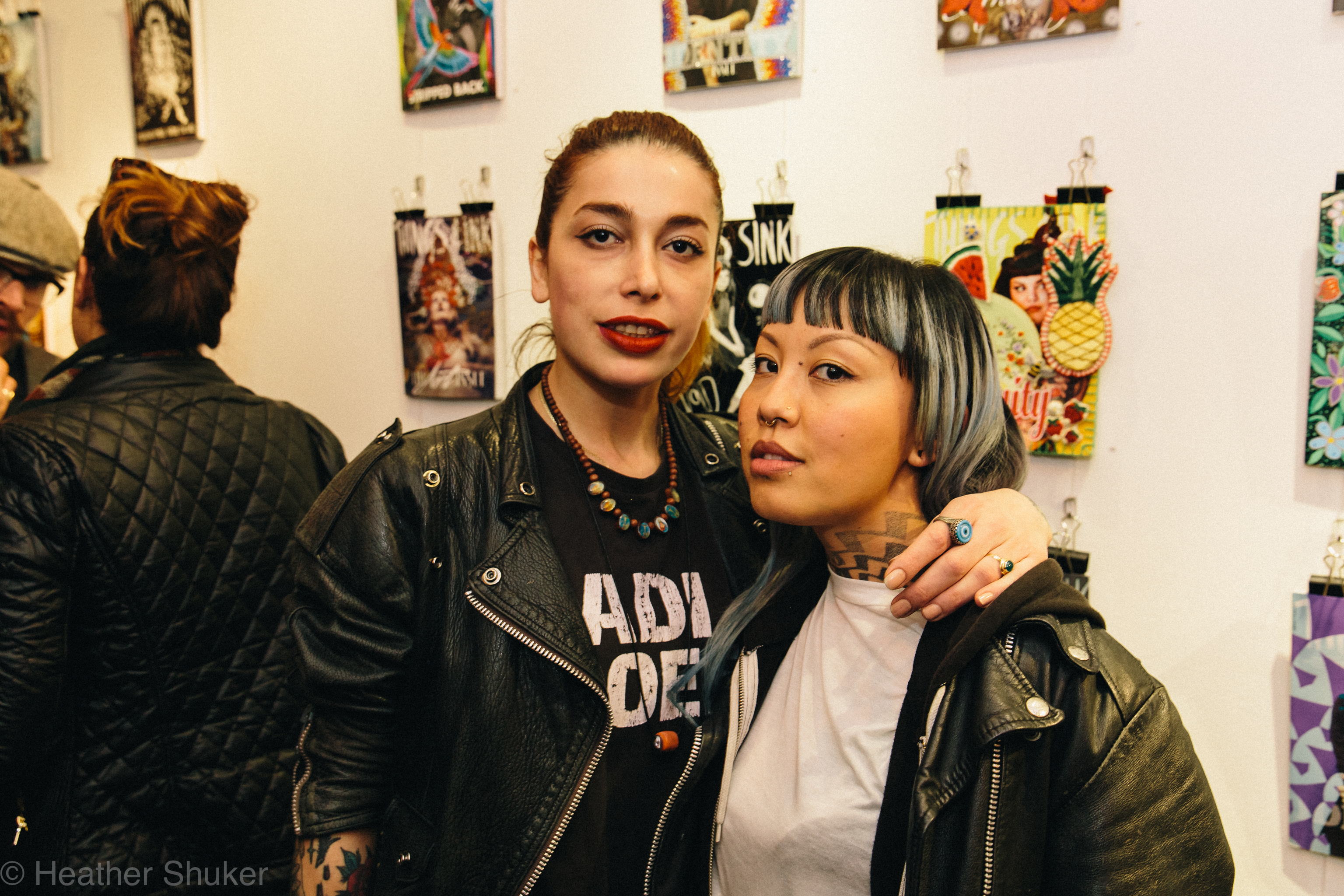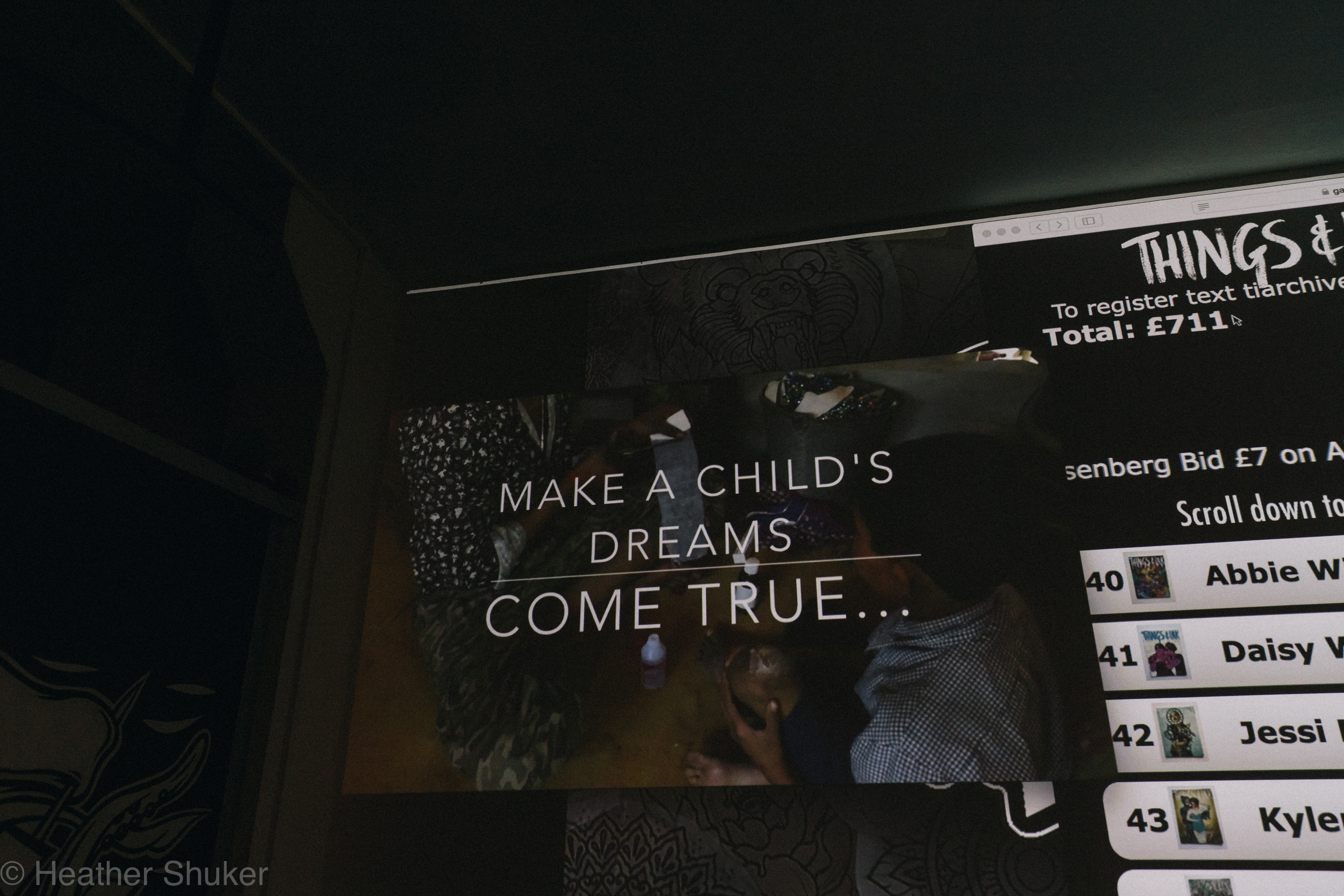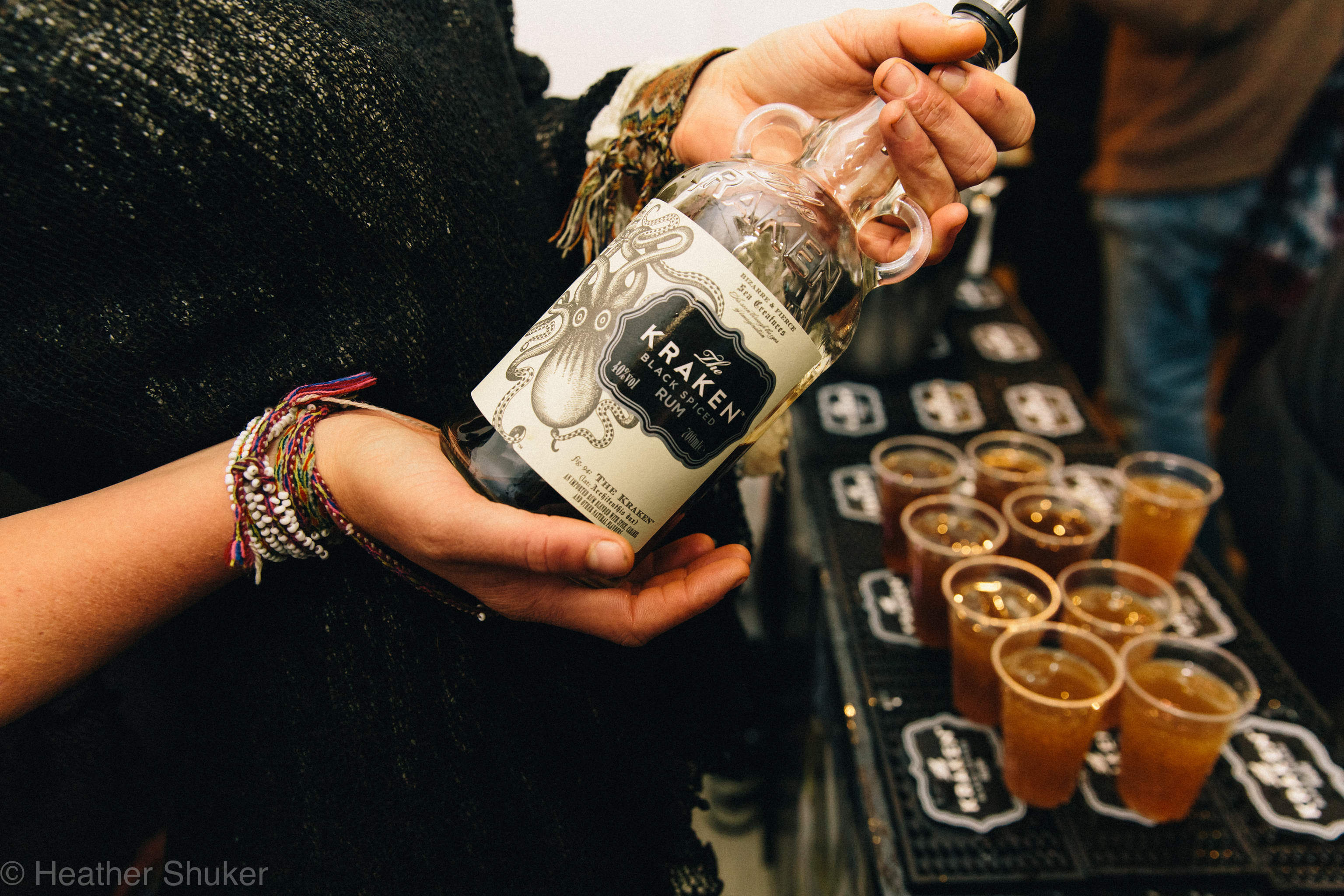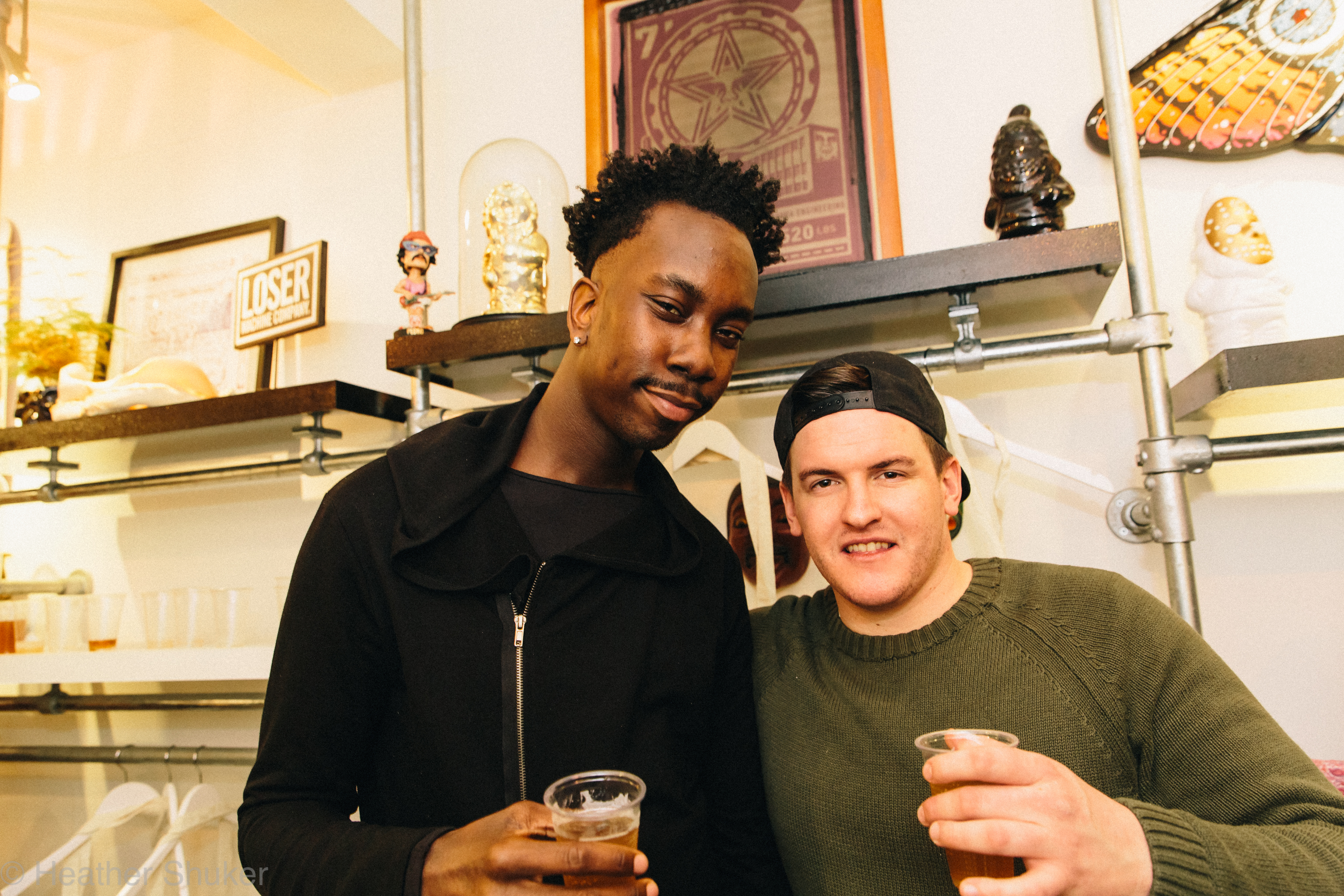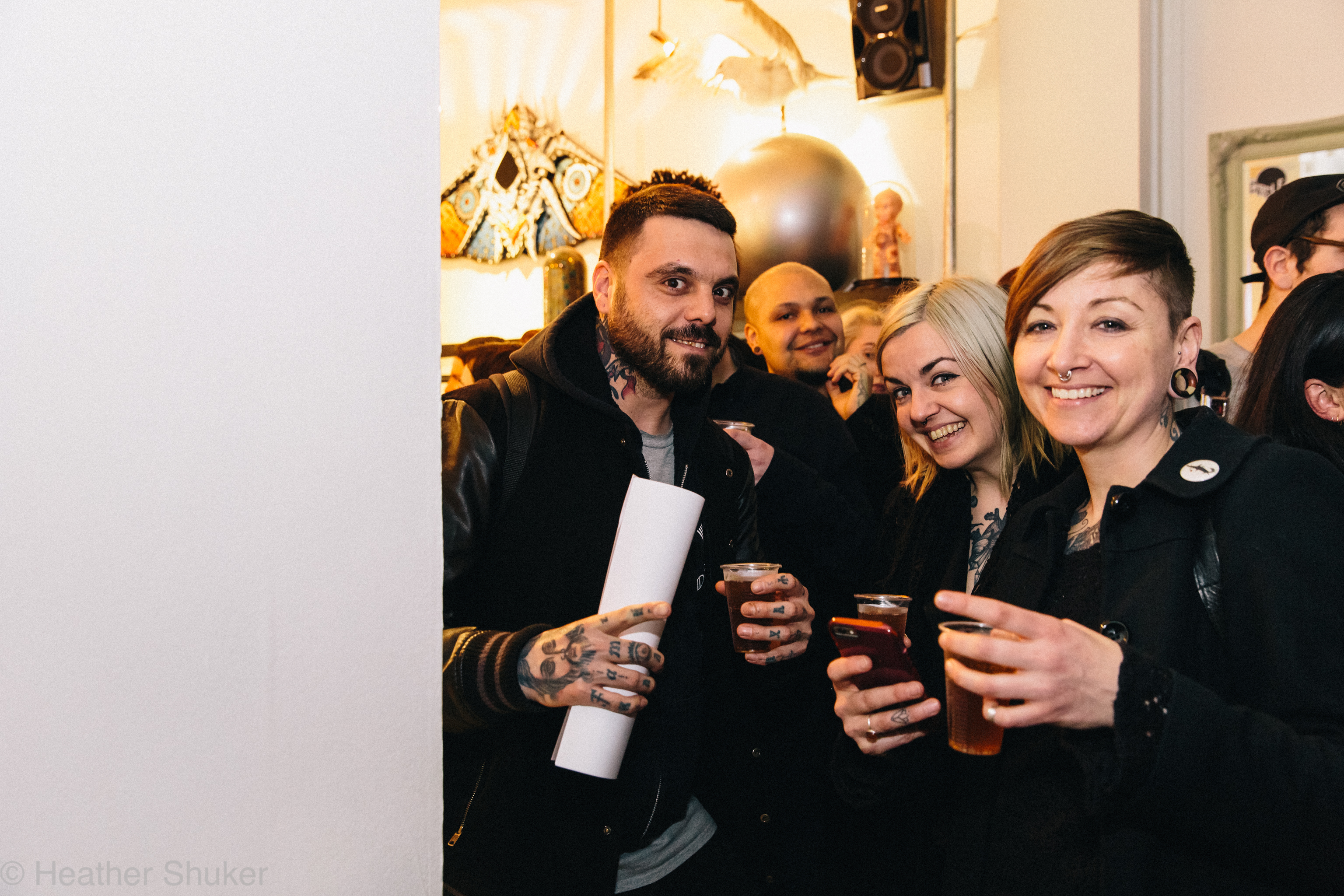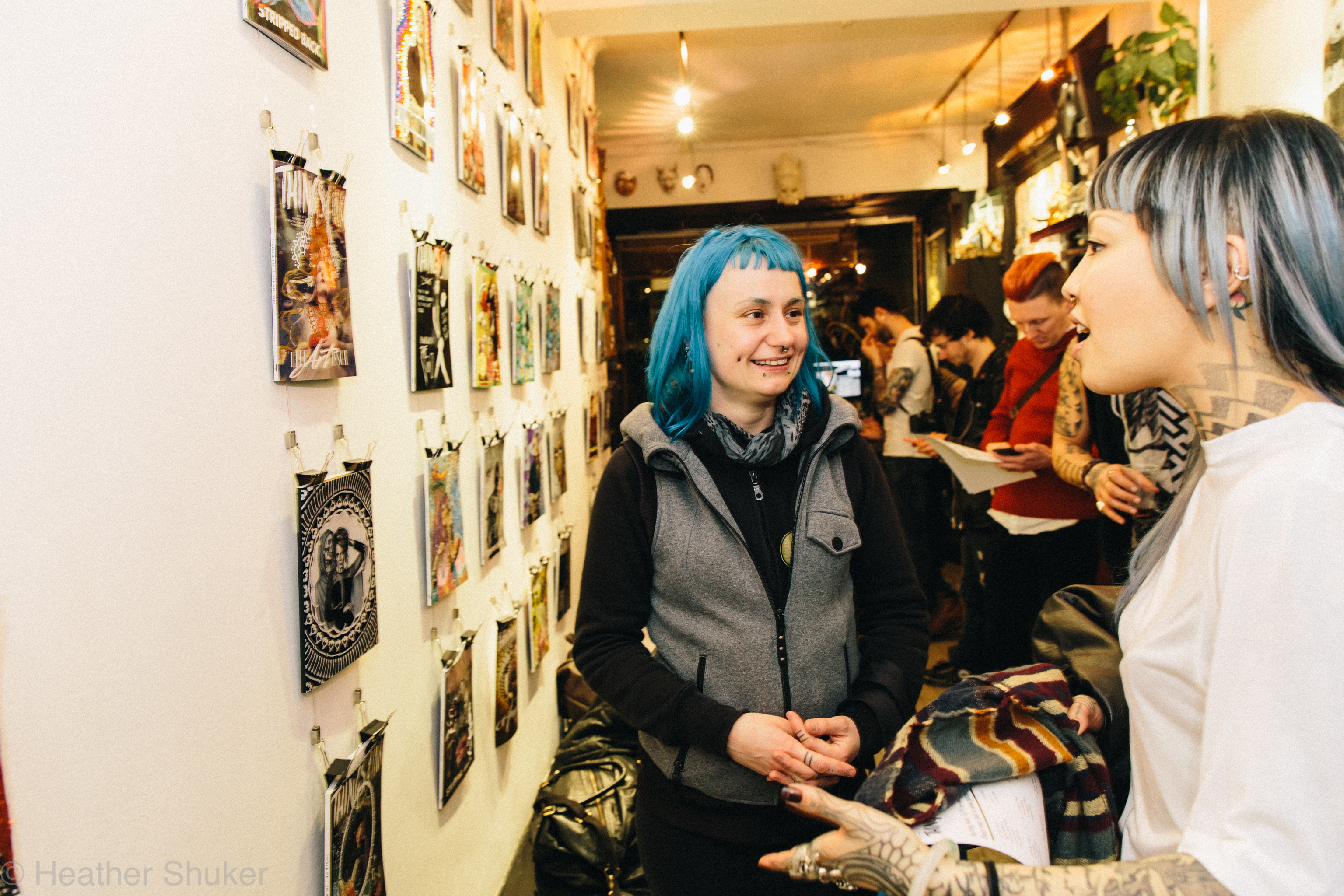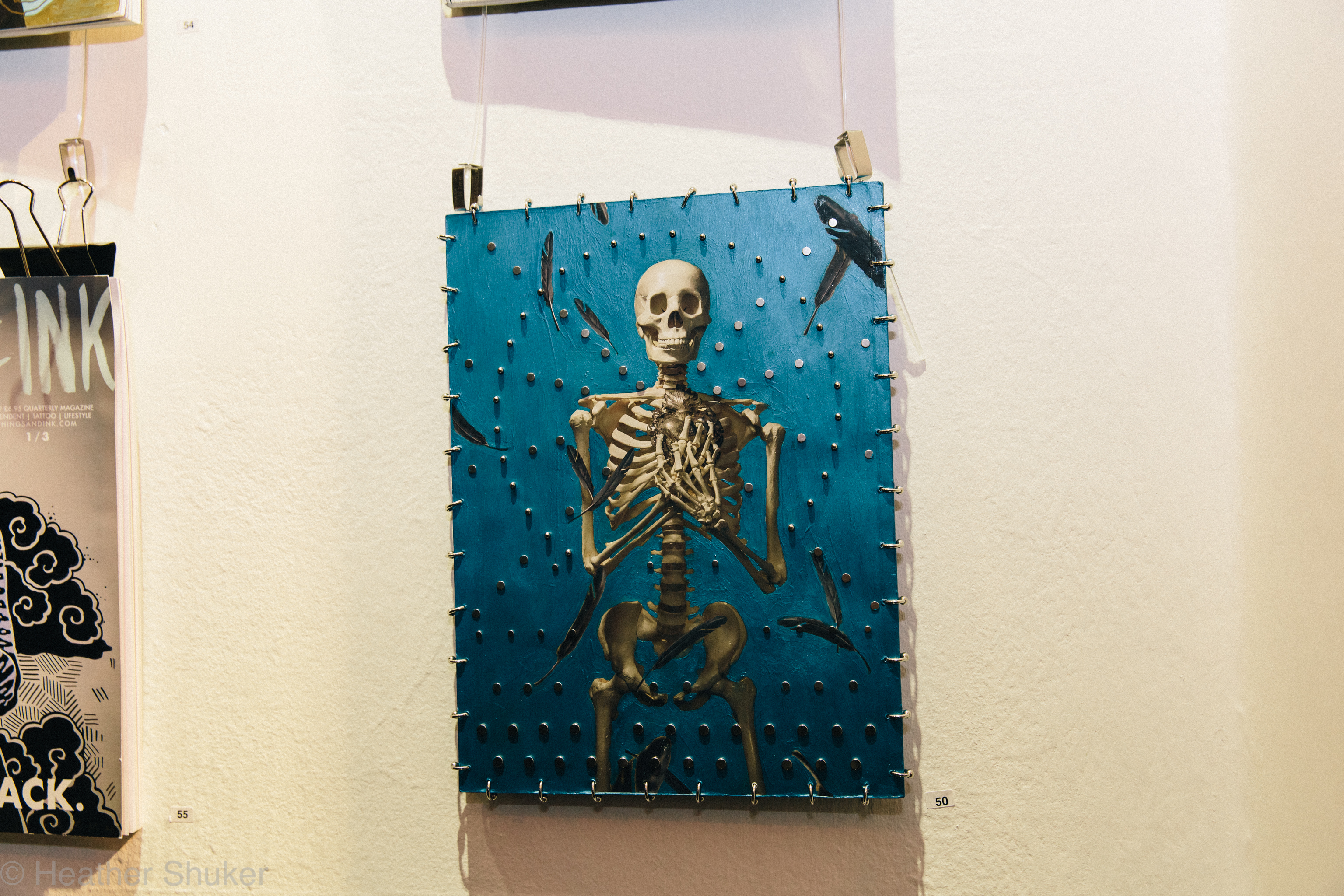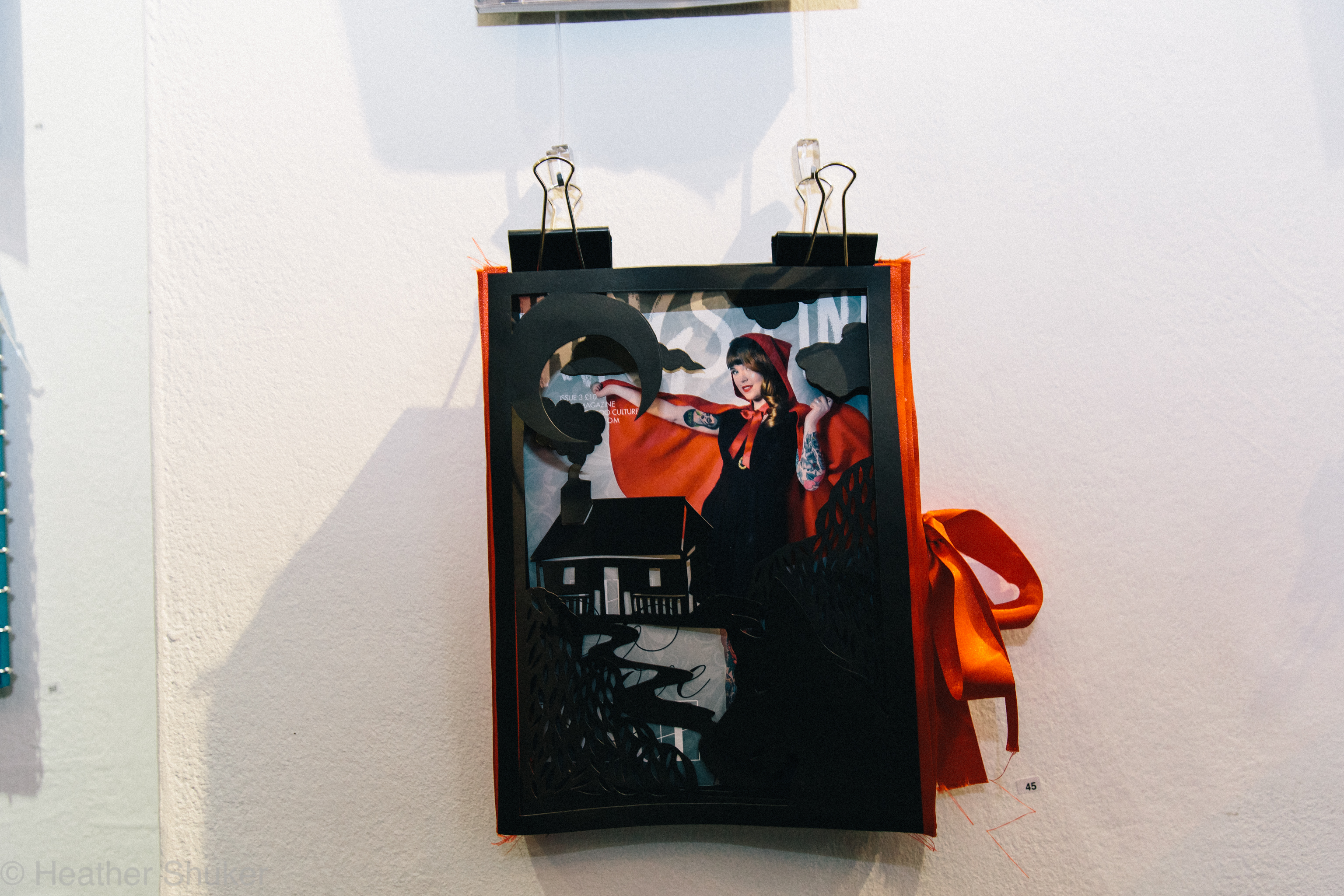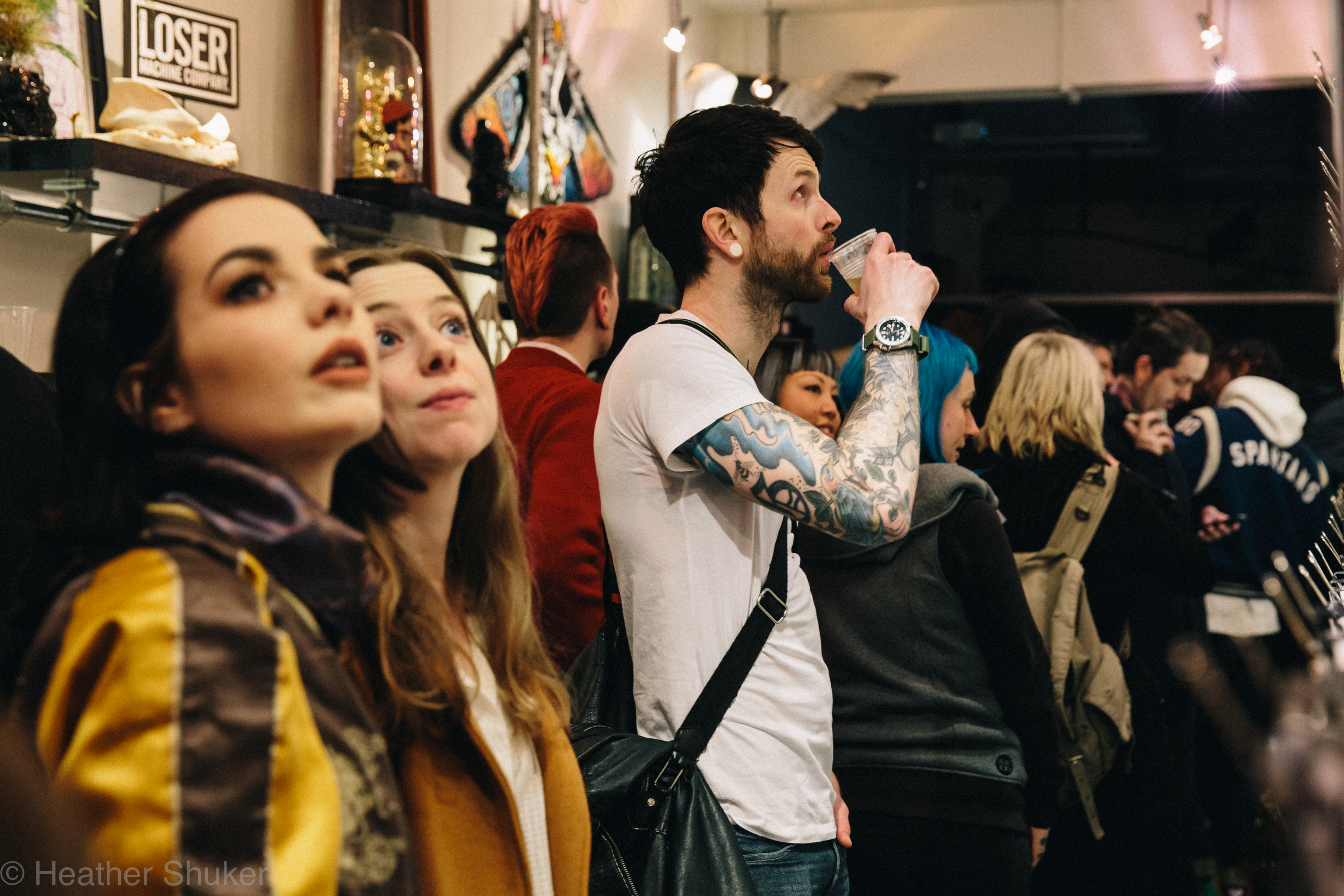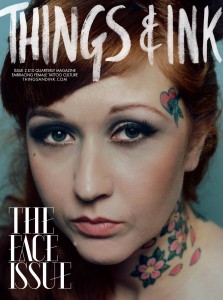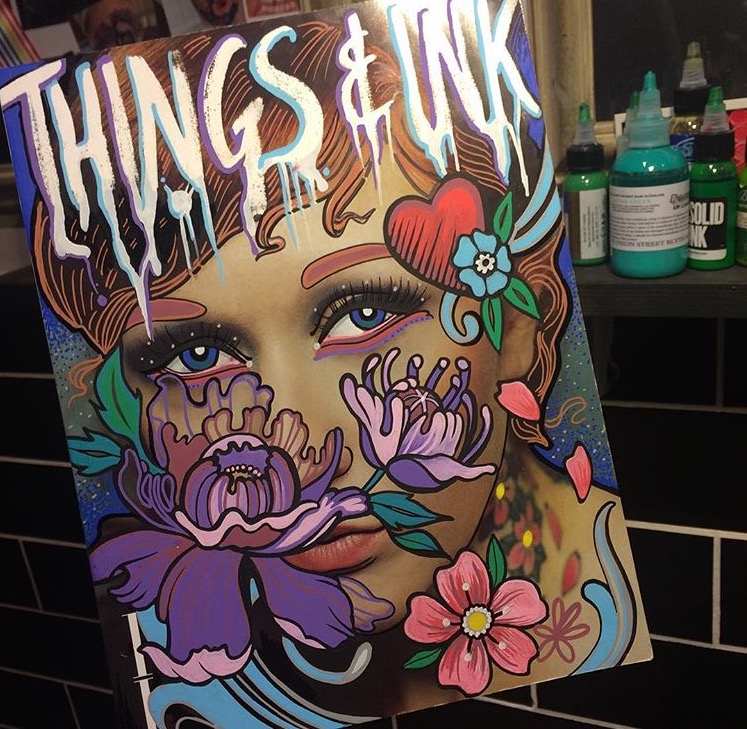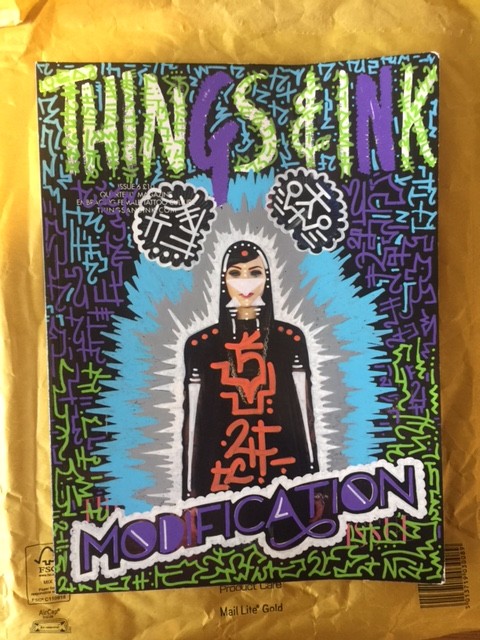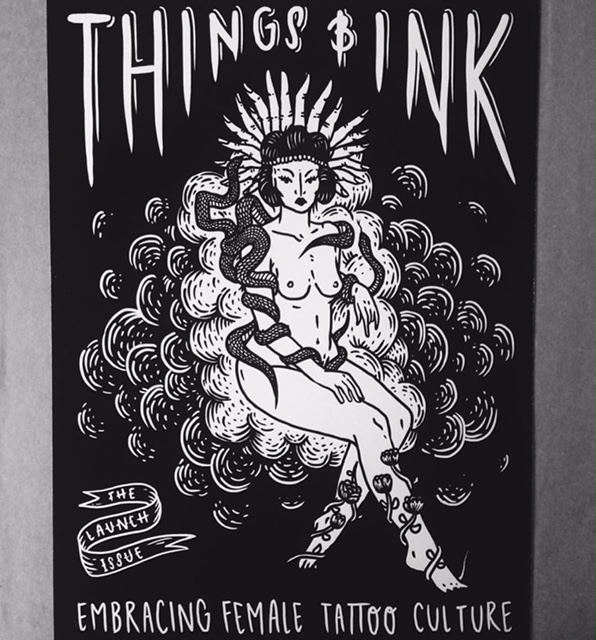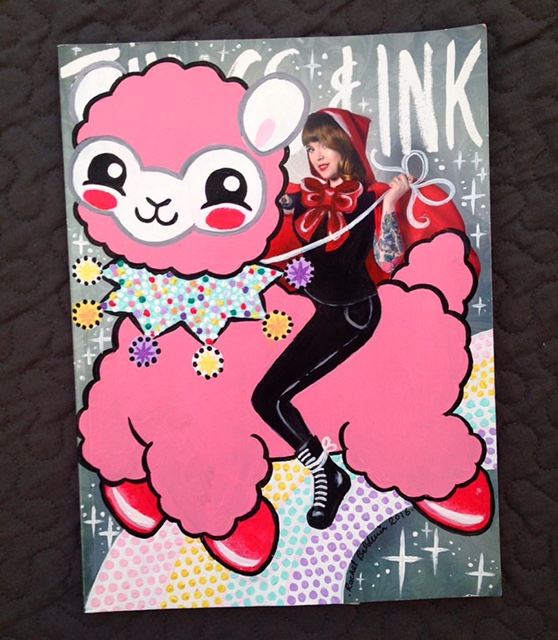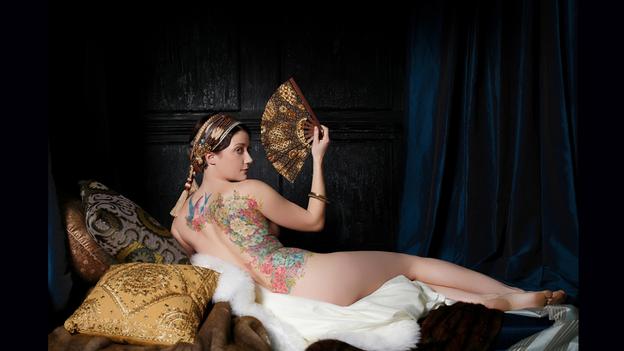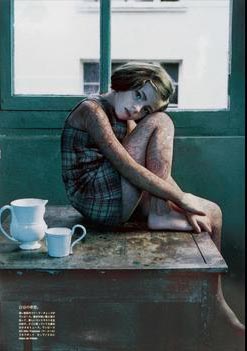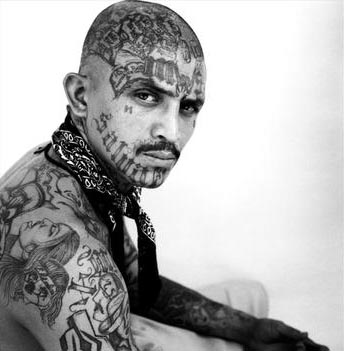In this interview German born tattoo artist Etienne Steffen talks about his latest art project, performance and work: Bluttiefdruck…
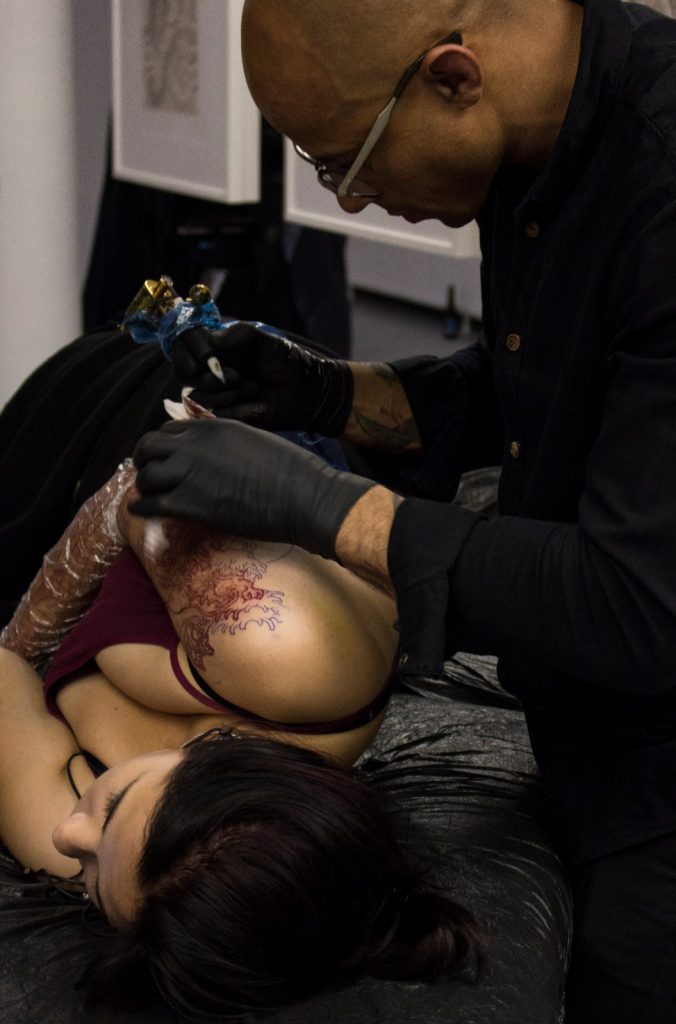
Etienne tattooing at the exhibition
Can you tell us about your project and performance? During my project Bluttiefdruck I combined my method of dry point printing with tattooing. I tattooed eight of a series of nine dragons – each one a whole sleeve. After each sleeve was finished I replicated the image of the tattoo onto a life-sized zink plate using a tattoo machine. Afterwards the image on the plate was printed onto handmade paper.
The performance was a combination of the previous techniques and mediums. The fusion was the next logical step. The ninth and final dragon of the series was tattooed on a participant using solely water instead of ink. The outflowing blood caused by the perforation of the skin was caught on a white piece of linen. An impression of the ninth dragon appeared. I coined this technique Bluttiefdruck.
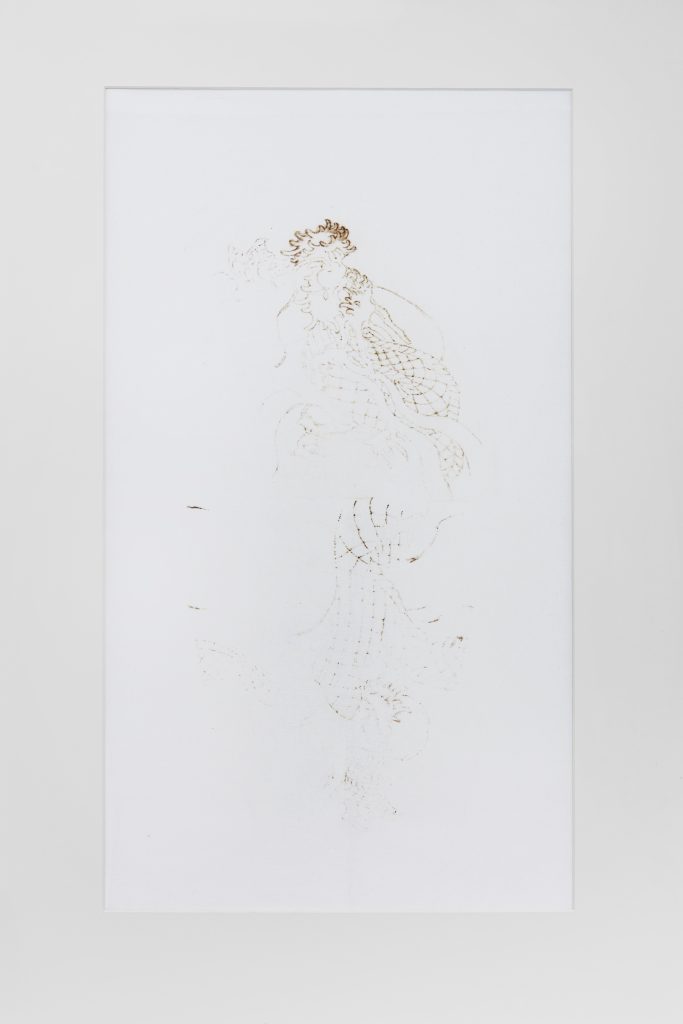
The impression of the ninth dragon – Bluttiefdruck
How long did the performance take, how did the participant cope with the pain? The performance itself took about two hours. The participant took the pain very well. The pain was equivalent to getting a regular tattoo, due to the same process just replacing ink through water.
The Nine Dragon Scroll by Chinese artist Chen Rong from 1244 served as the main point of reference in this nine-part series. What was it about the dragon scroll and Japanese tattooing that fascinated you? It was always a reference when it came to dragons. I believe I have seen its influence in a lot of East Asian art whether ukiyo-e, sumi ink painting or horimono. So to me this project is also a homage to the nine dragon scroll. With regards to Japanese tattooing, I like the idea of a complete body suit concept with the back as the centre piece. Not to mention the fluidity in the background which carries the motives and connects them.
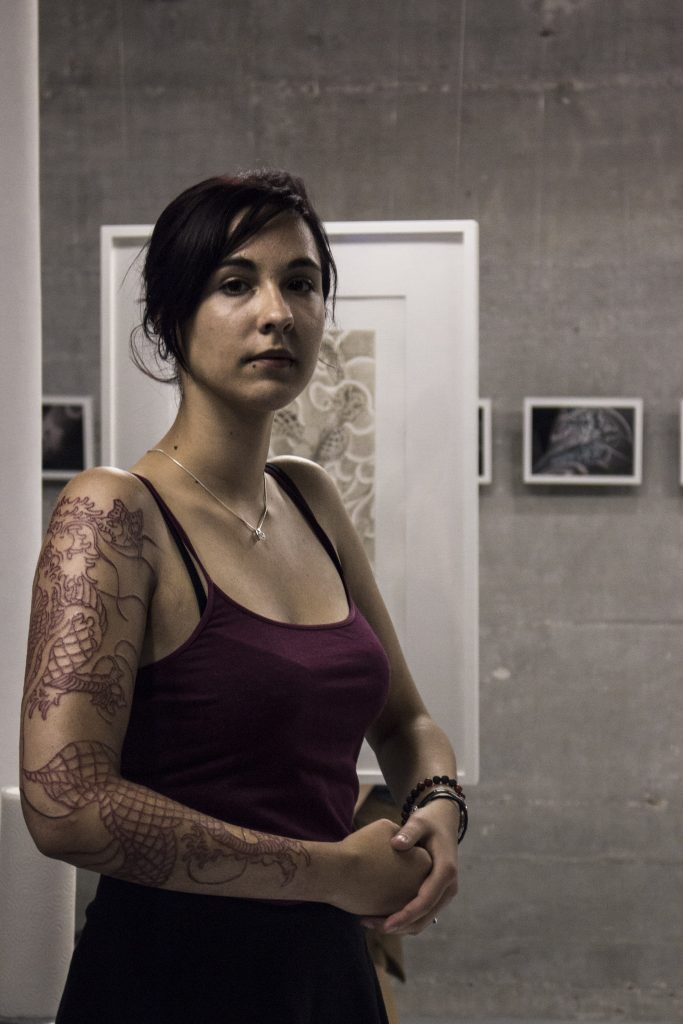
The participant and her finished tattoo after the performance
How has the exhibition been received? Most people that come to an exhibition are there because of the event, and the exhibition itself serves as a vehicle. The project and performance was very niche, to be able to understand it fully you needed specific knowledge of Horimono (carving or engraving) and dry point printing, so not everyone understood what exactly was going on. But there were quite a few close observers that really took the time to understand what the project and the performance are about – these were astonished and appreciated what they saw. On the other hand, someone in the tattoo industry, who I respect very much, said that they ‘hate everything it (the film) stands for and it has nothing to do with the art of tattooing’ – apparently my project polarises people.
What inspired you? Japanese woodblock prints have served as reference for most of Japanese tattooing and Horimono, and there is already a connection between printing and tattooing. I’ve been obsessed with the idea of combining Japanese tattooing with dry point printing since I started “tattooing” metal plates. To me it just felt natural to connect the two. When I realised that horimono could also be translated as engraving it made even more sense. After a long process of distilling different ideas the project became clear during one of my many travels to Japan to get my backpiece.
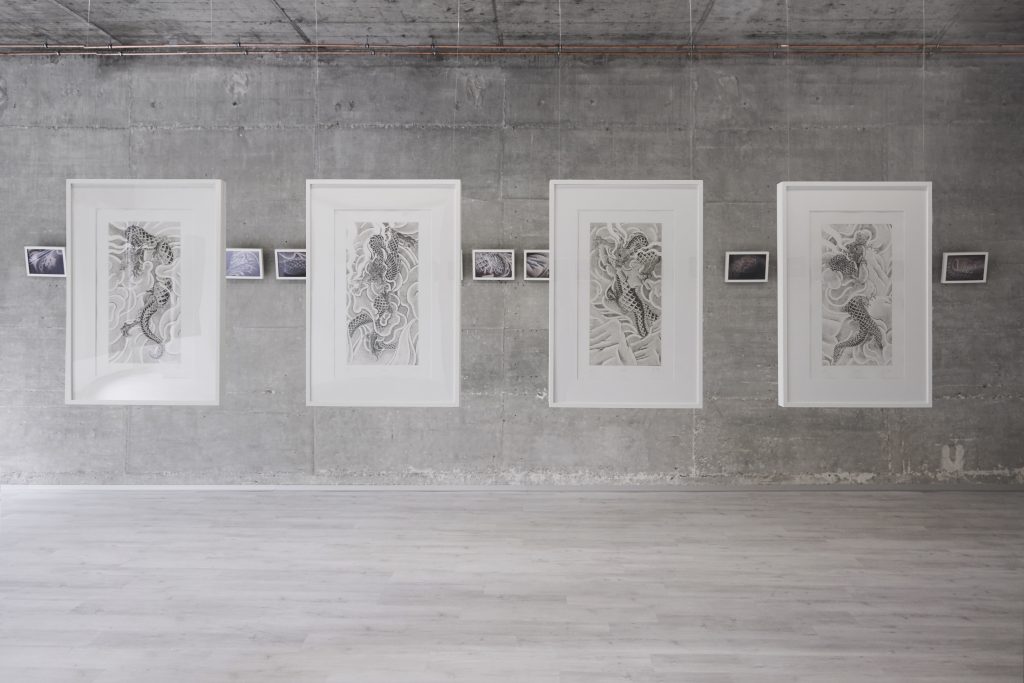
Four of the nine dragons in the series
What were you hoping to achieve, what message are you spreading? I want the people to see a certain subject through my eyes. To make the connections that I can see visible to others that might not see those parallels. To interpret traditional concepts and mediums (of art) in a new way. To put things into a new context. This project is about pushing boundaries. In today’s cultural landscape everything is about aesthetic -everything is superficial. In Bluttiefdruck I visualise the process. I had to disconnect the process from a more permanent motive, to span an arc between Japanese tattooing/horimono, European printing/drypoit and initiation rituals of ancient African cultures. My work is about discurs.
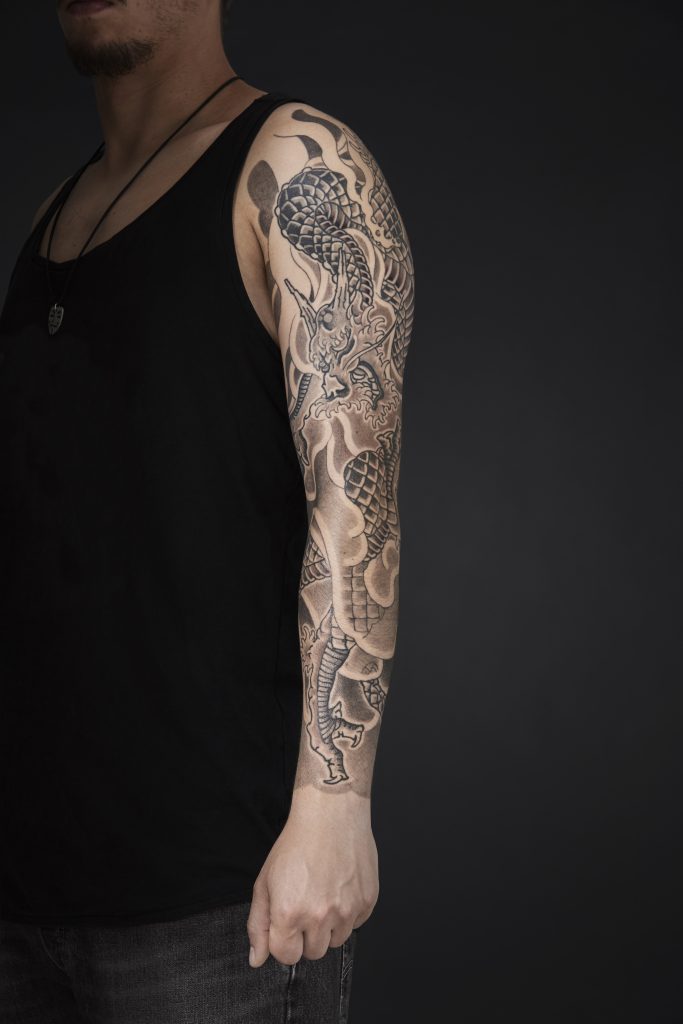
One of the tattooed dragons created for the exhibition
What do you love about tattoos? I love so many things about tattoos! They’re simple and complex at the same time. On the one hand you have the simple exchange- I produce something someone else likes, they buy it and we’re both happy. Then there is the aspect of craft, no matter how good my design is I have to be able to tattoo it in a proper way. On the other hand some of the most beautiful and meaningful tattoos are not well crafted at all and because of that they send a stronger message than a good tattoo ever could. As a professional tattooer I also think it’s fascinating that as soon as the tattoo is finished it has no more monetary worth. It can not be sold anymore but it is still valuable for the wearer. No matter how good or bad a tattoo is, no matter if it is meaningful or just jewellery it marks a certain point in your lifetime. But what’s most appealing to me is that there is more to tattooing than meets the eye. The process of tattooing and receiving a tattoo is spiritual to me.
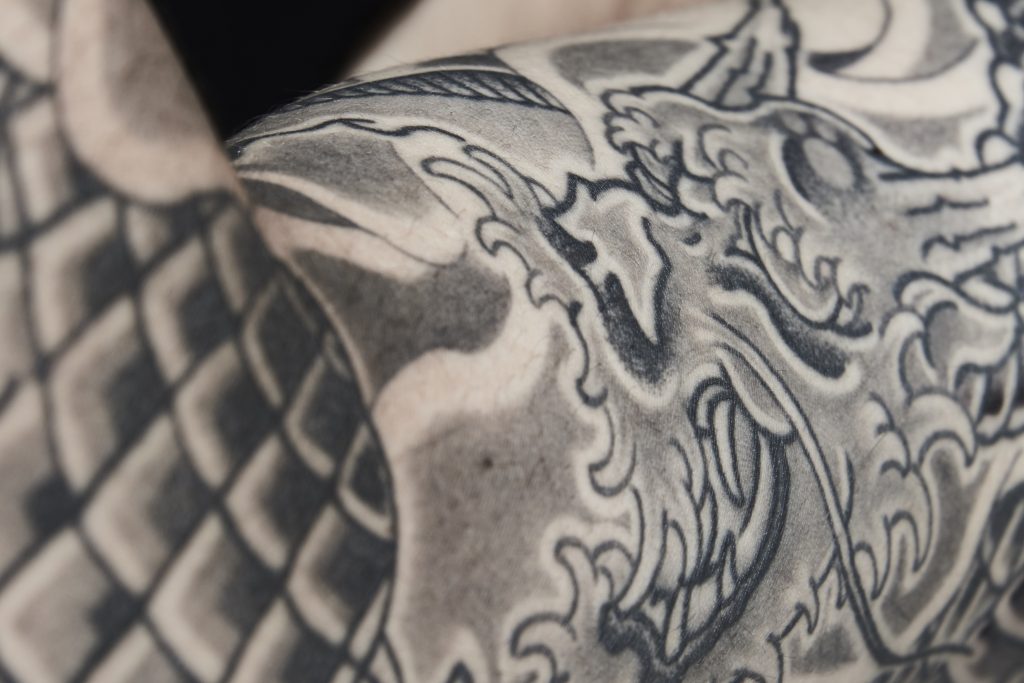
A close up of one of Etienne’s dragons
What the below video to see the Etienne’s performance and the creation of Bluttiefdruck:
